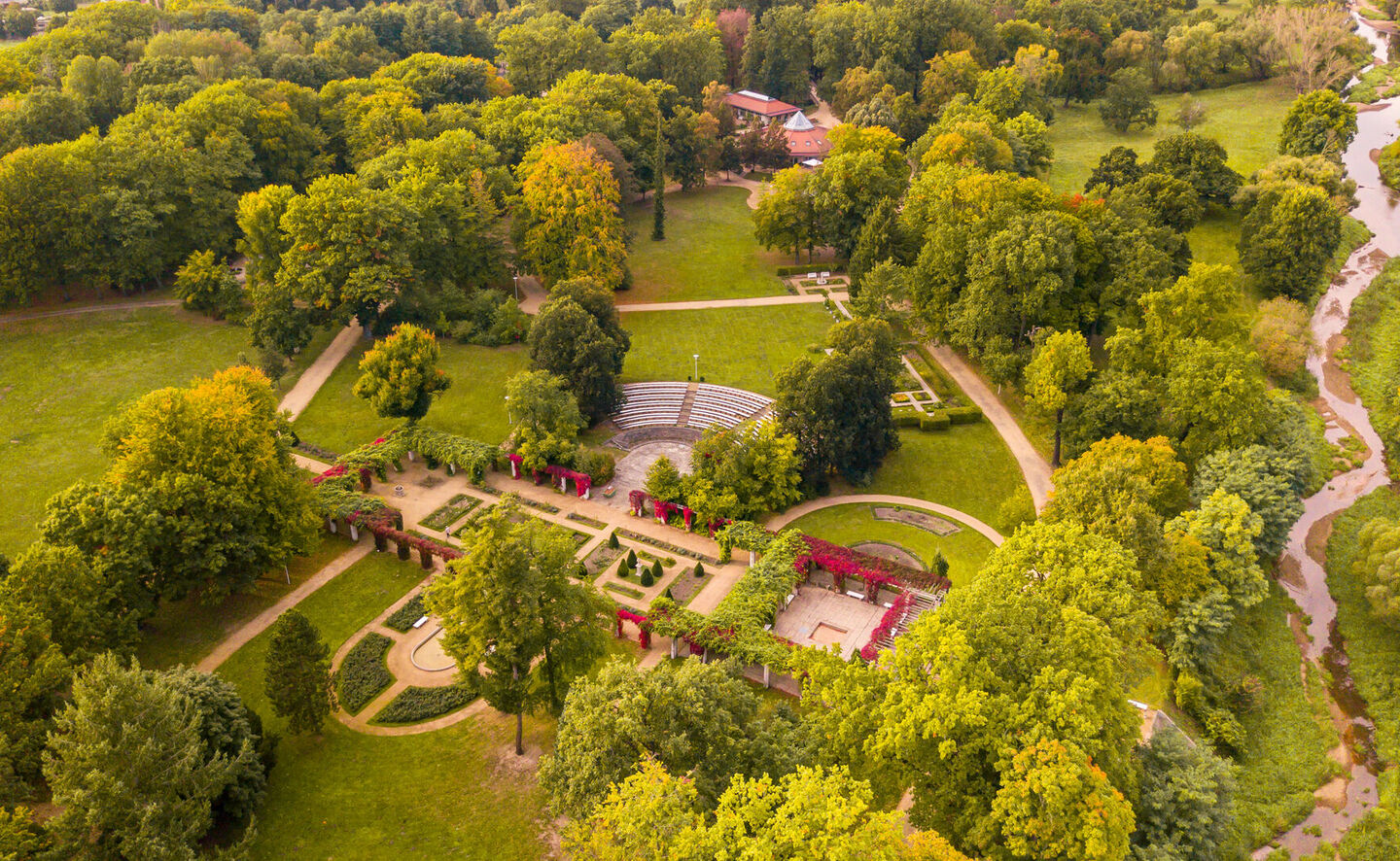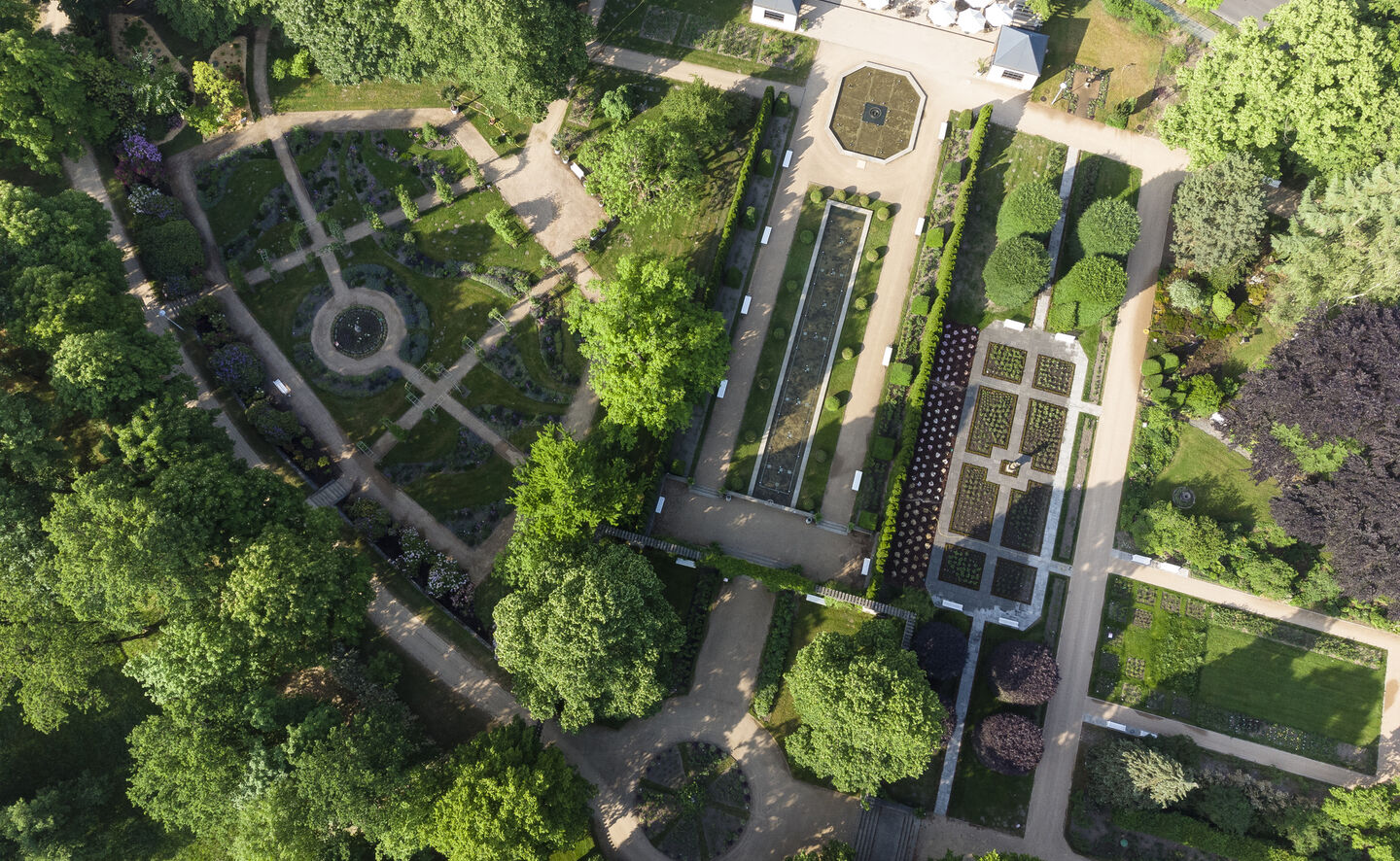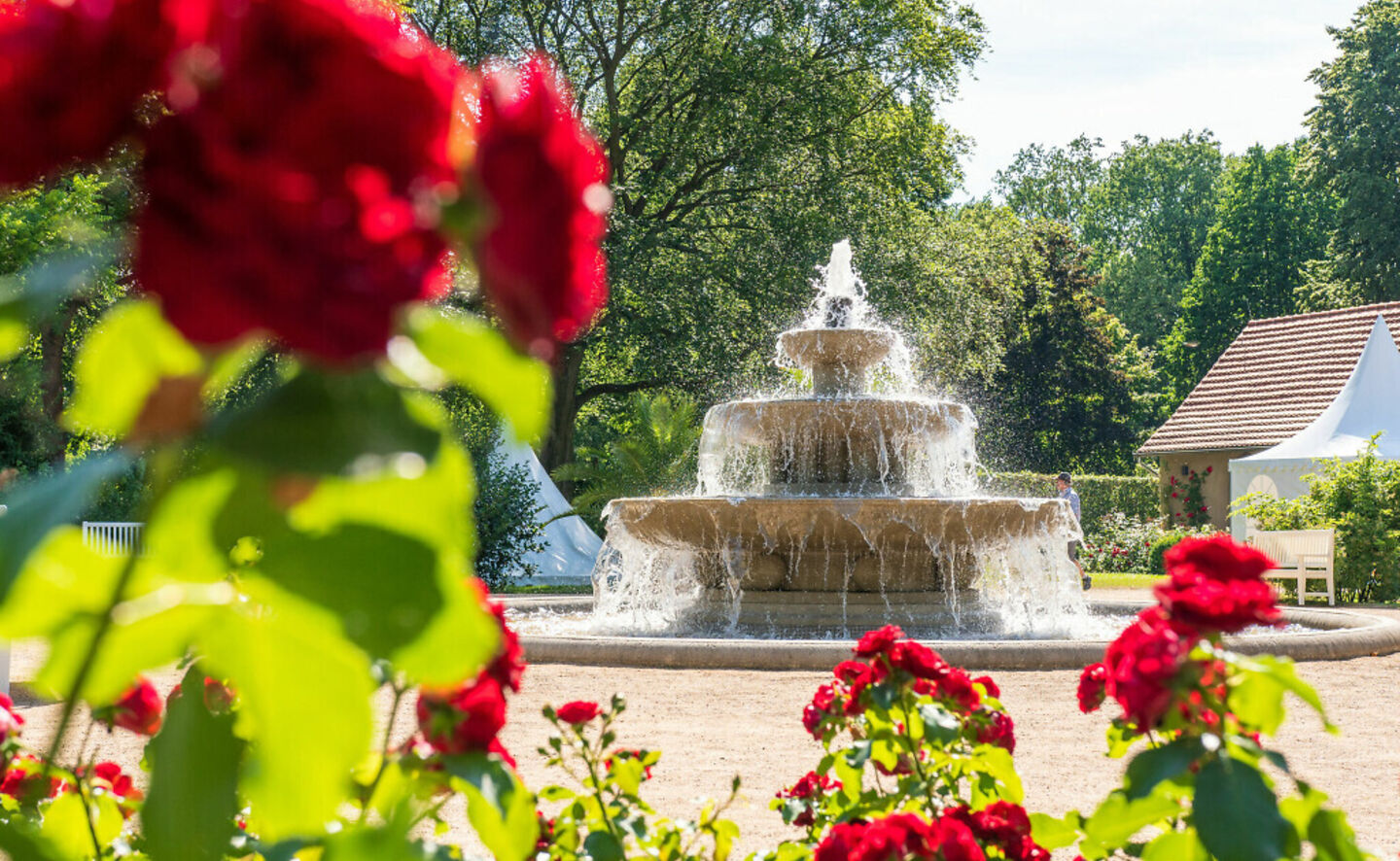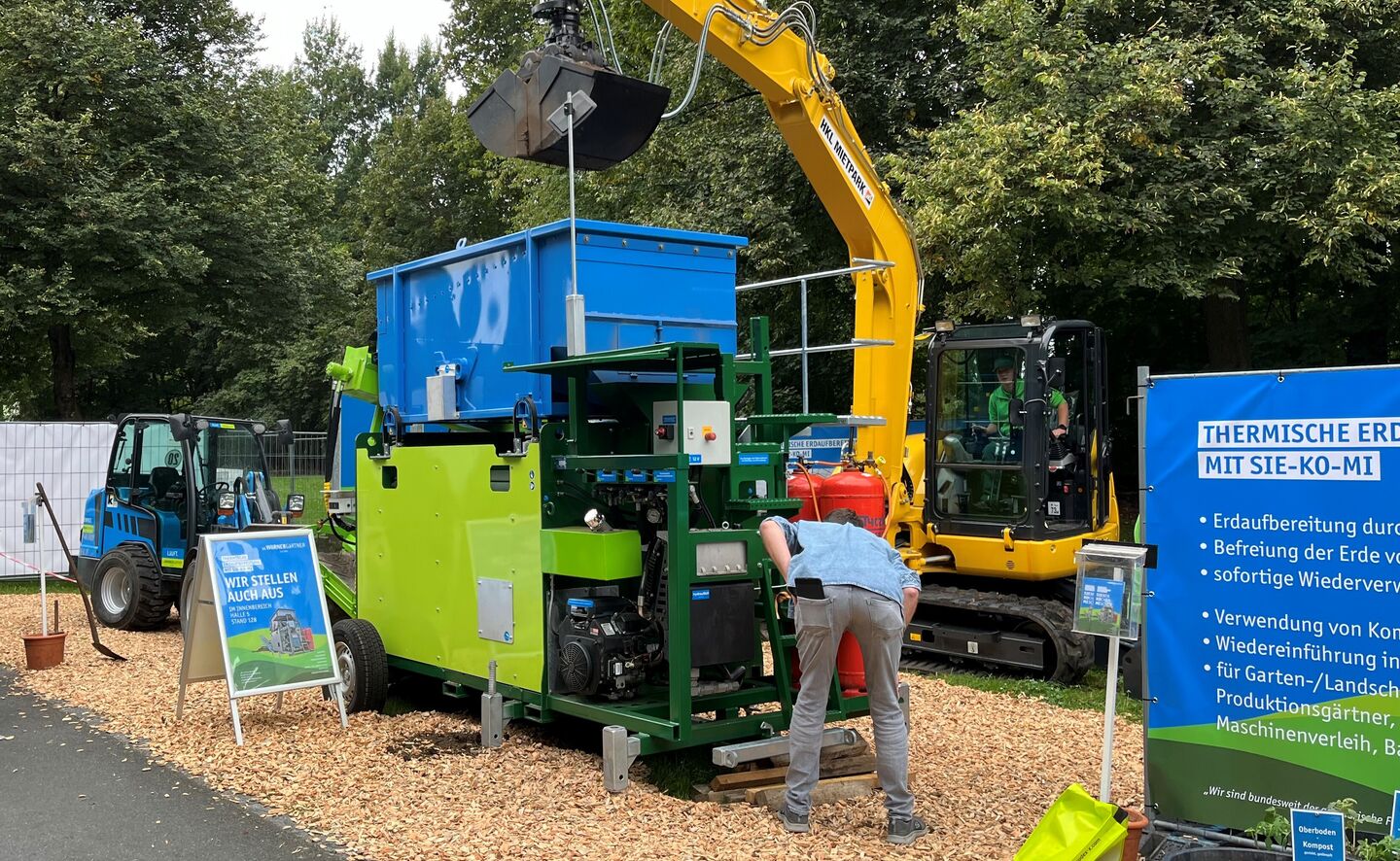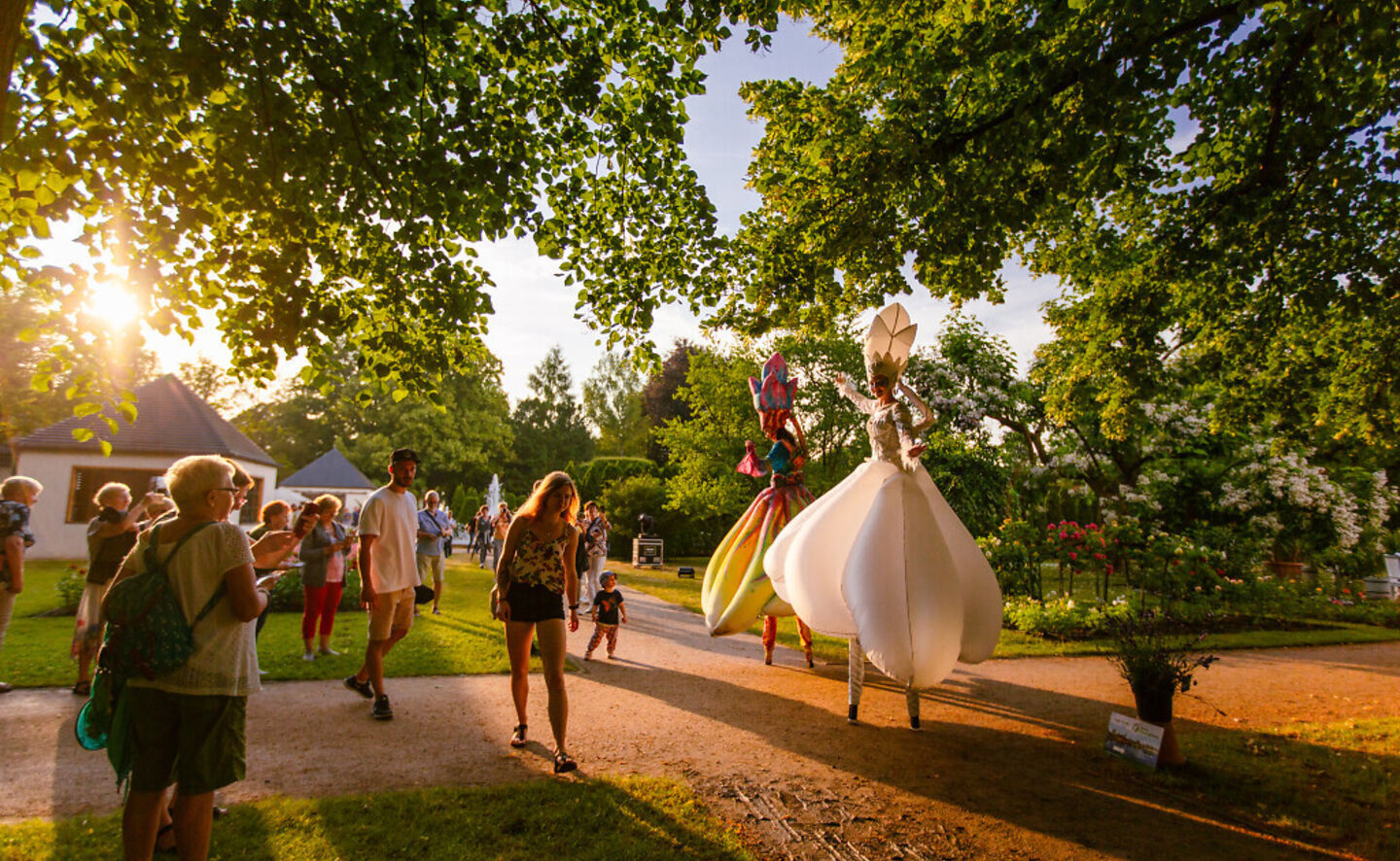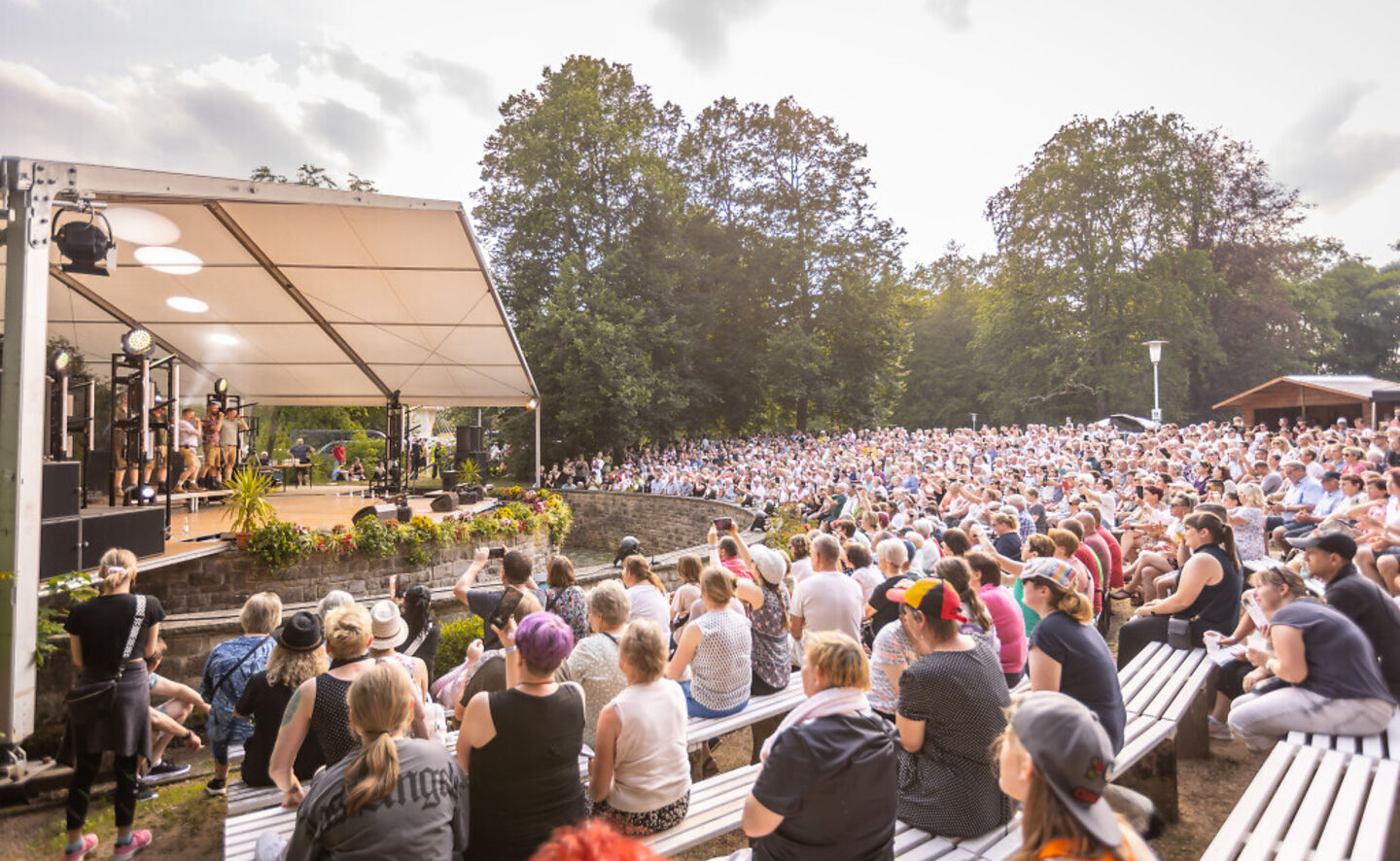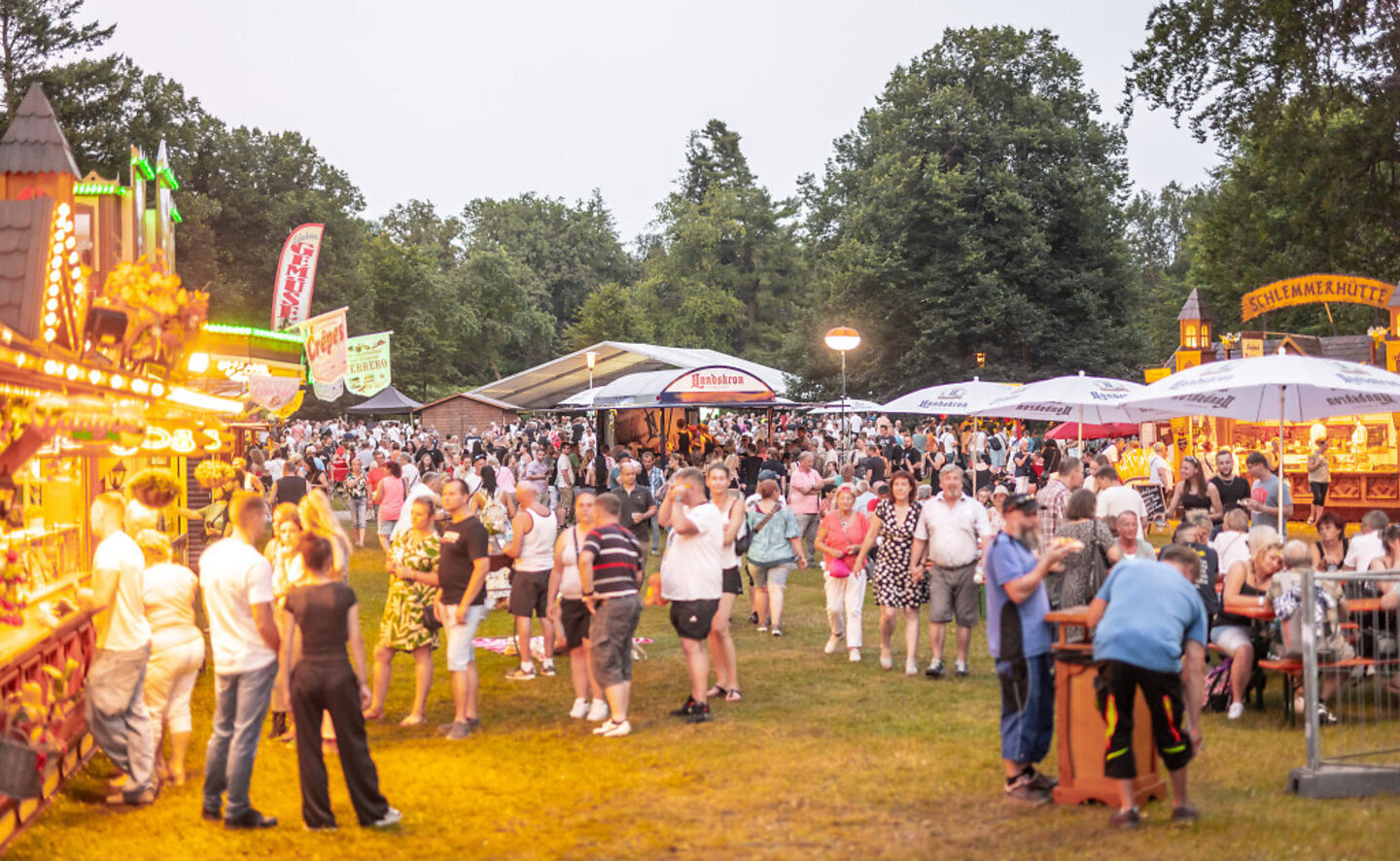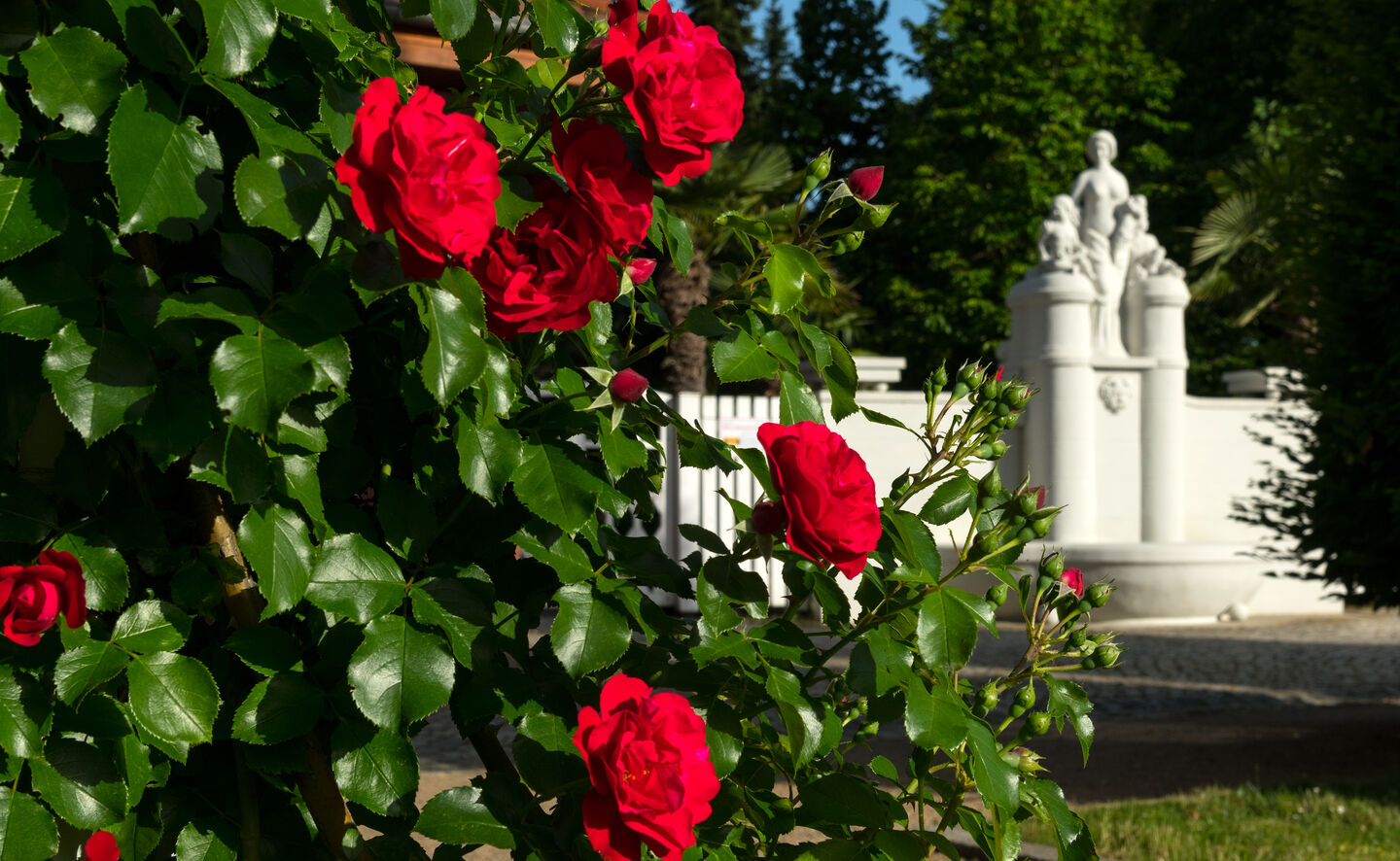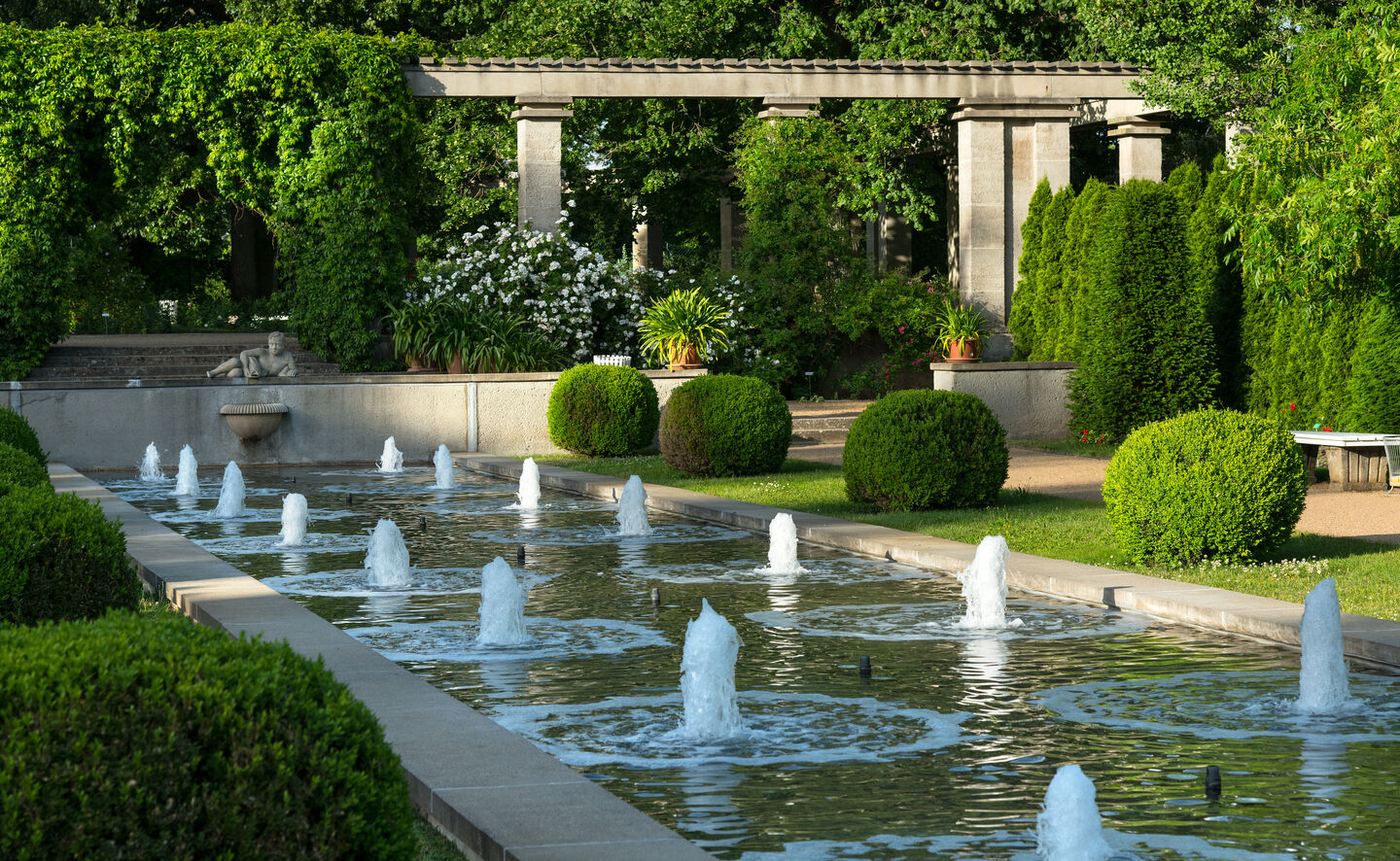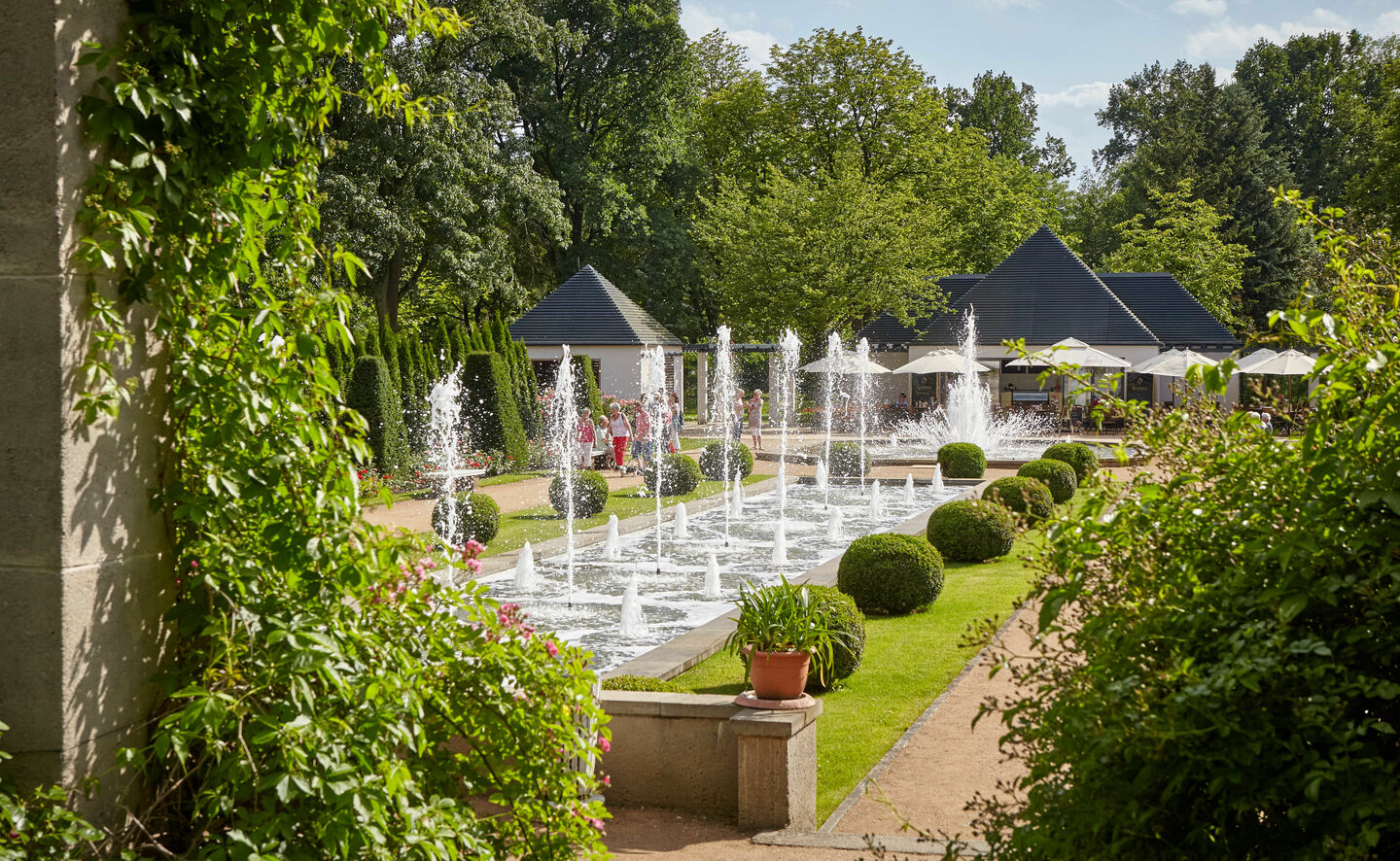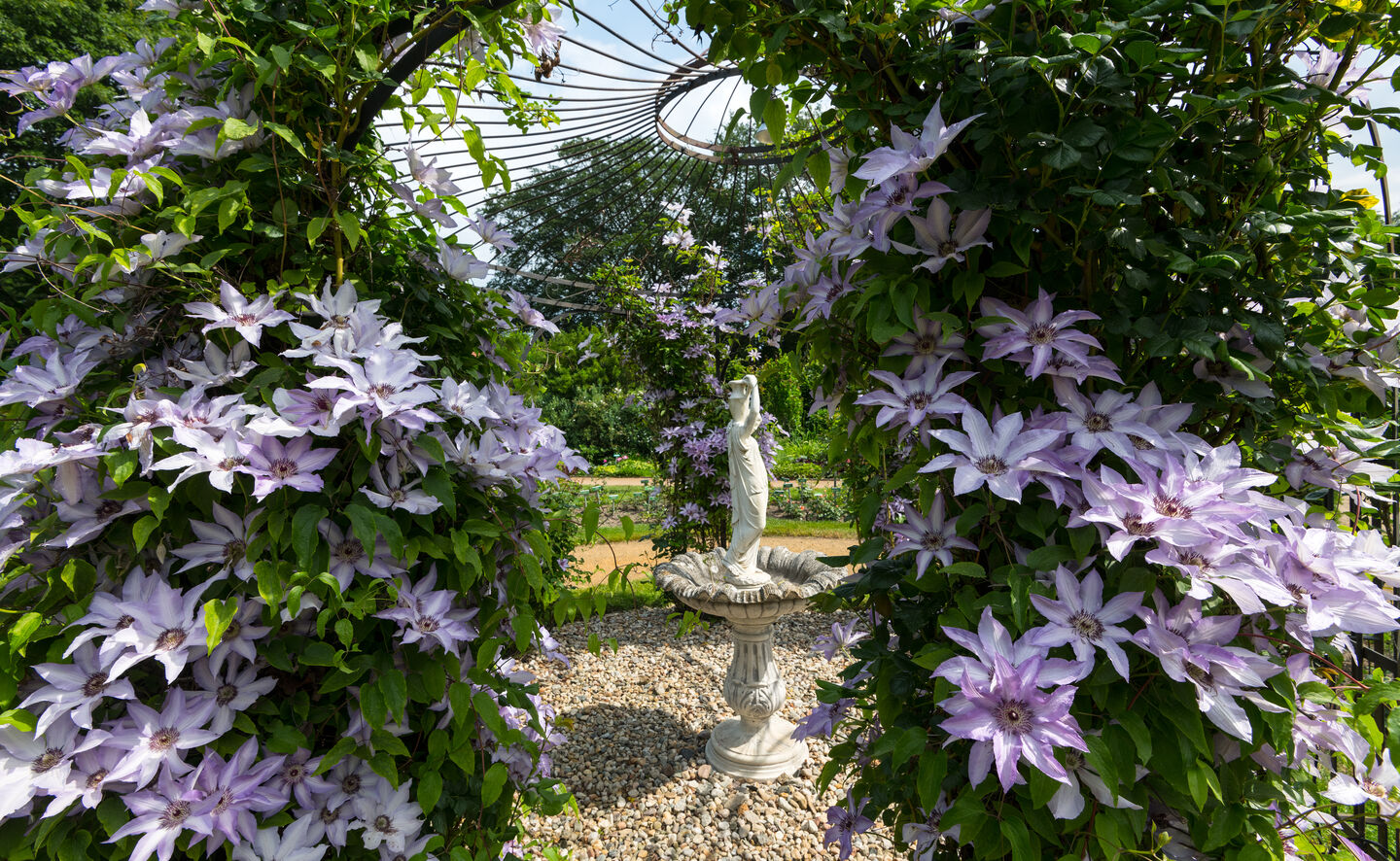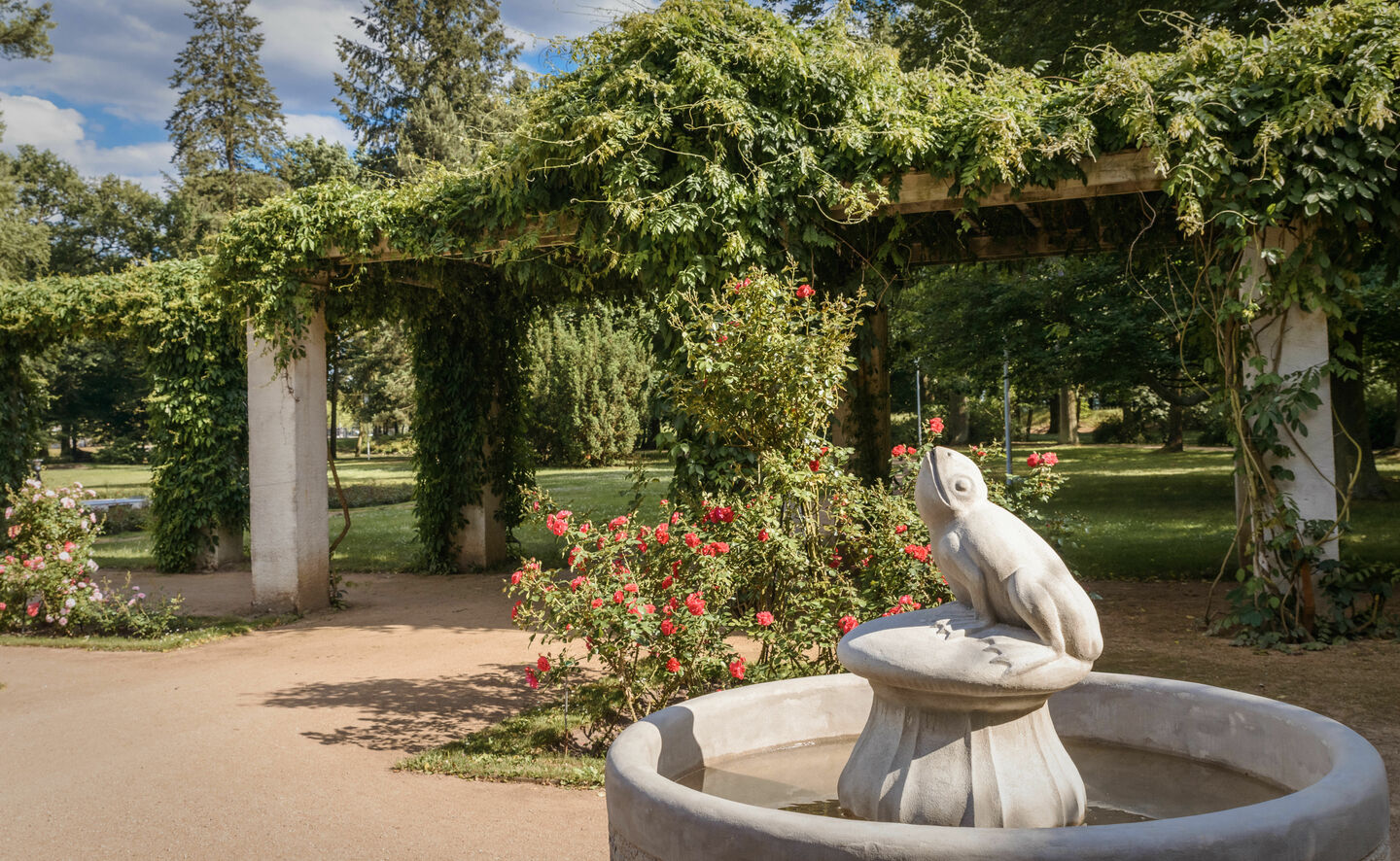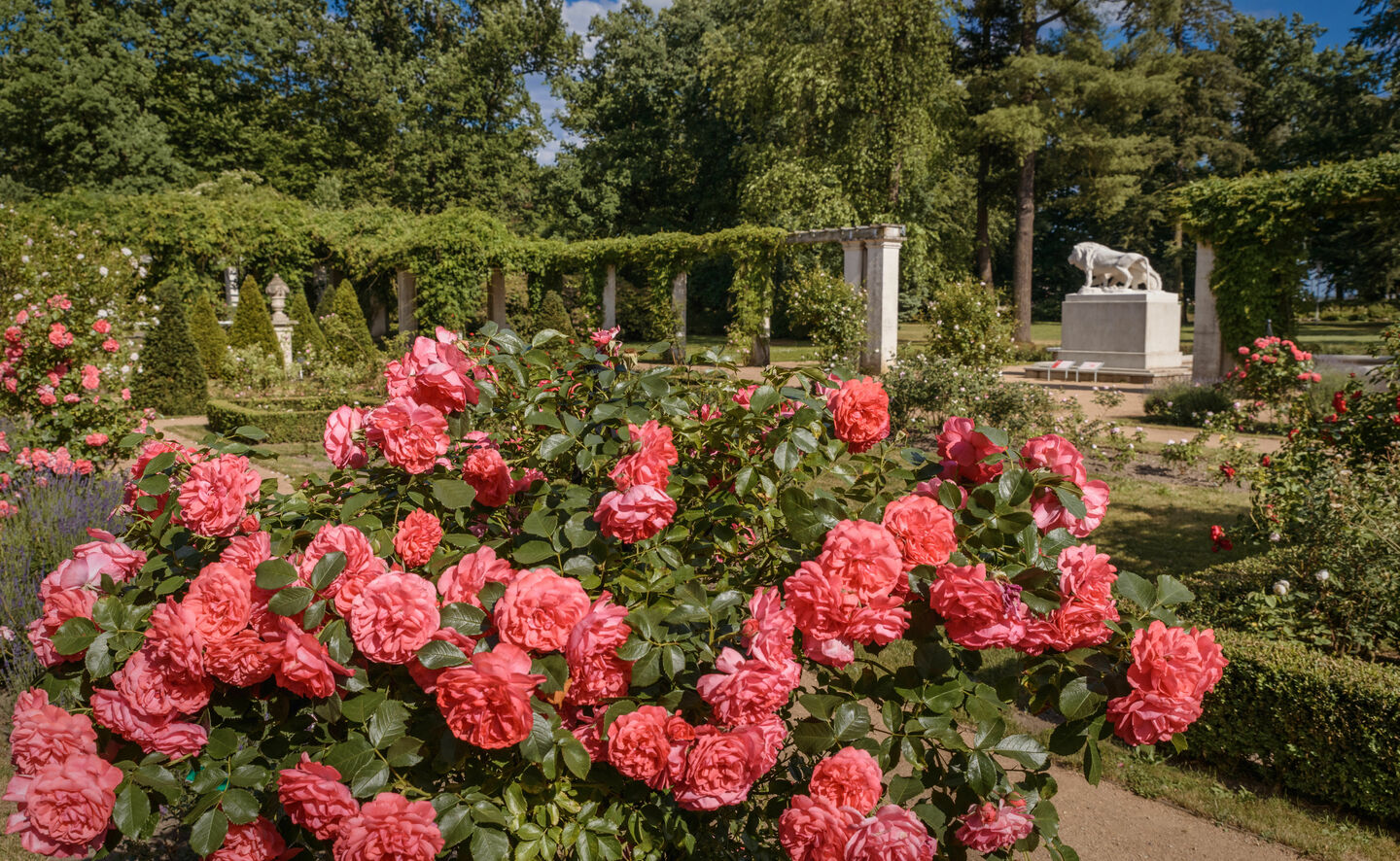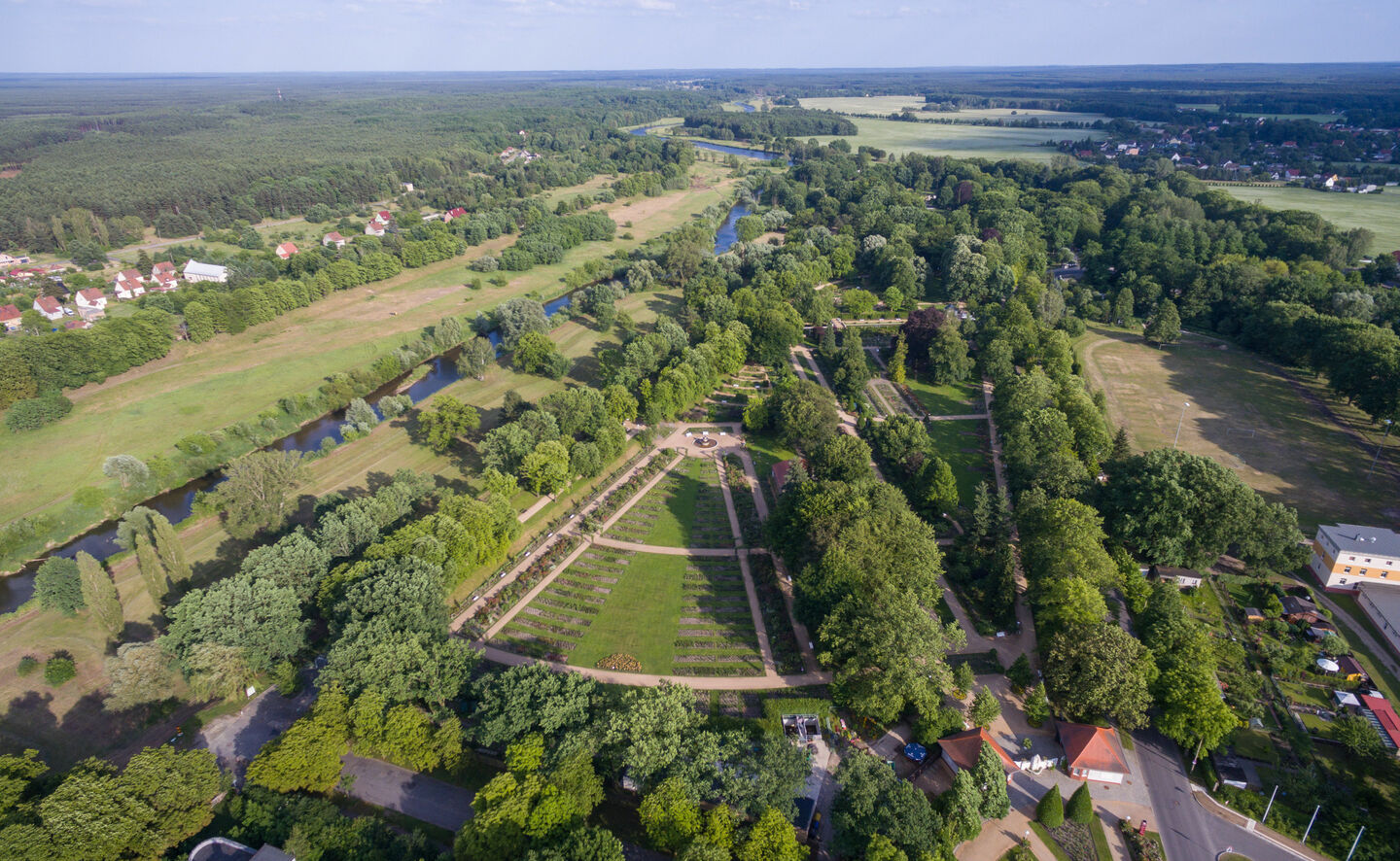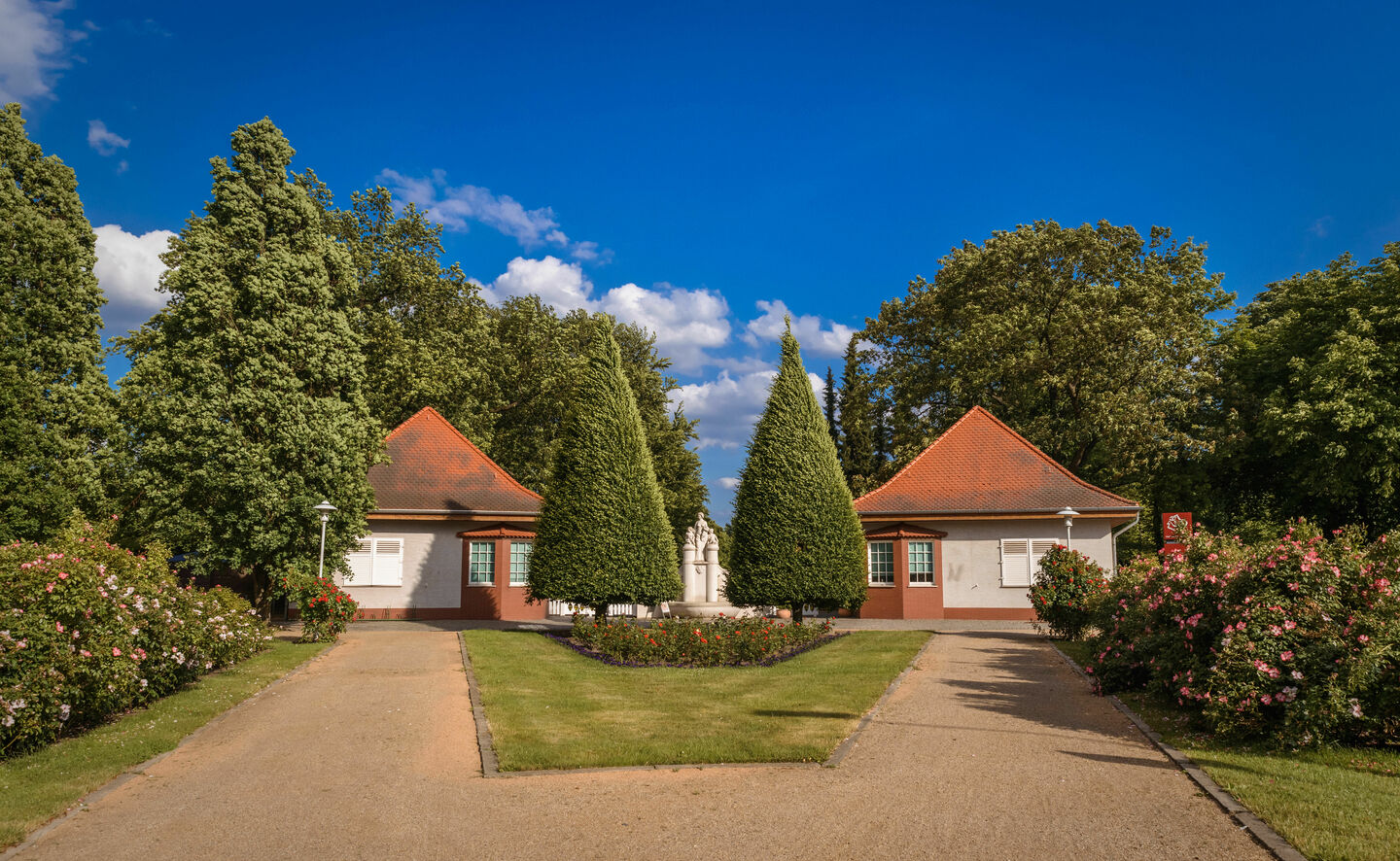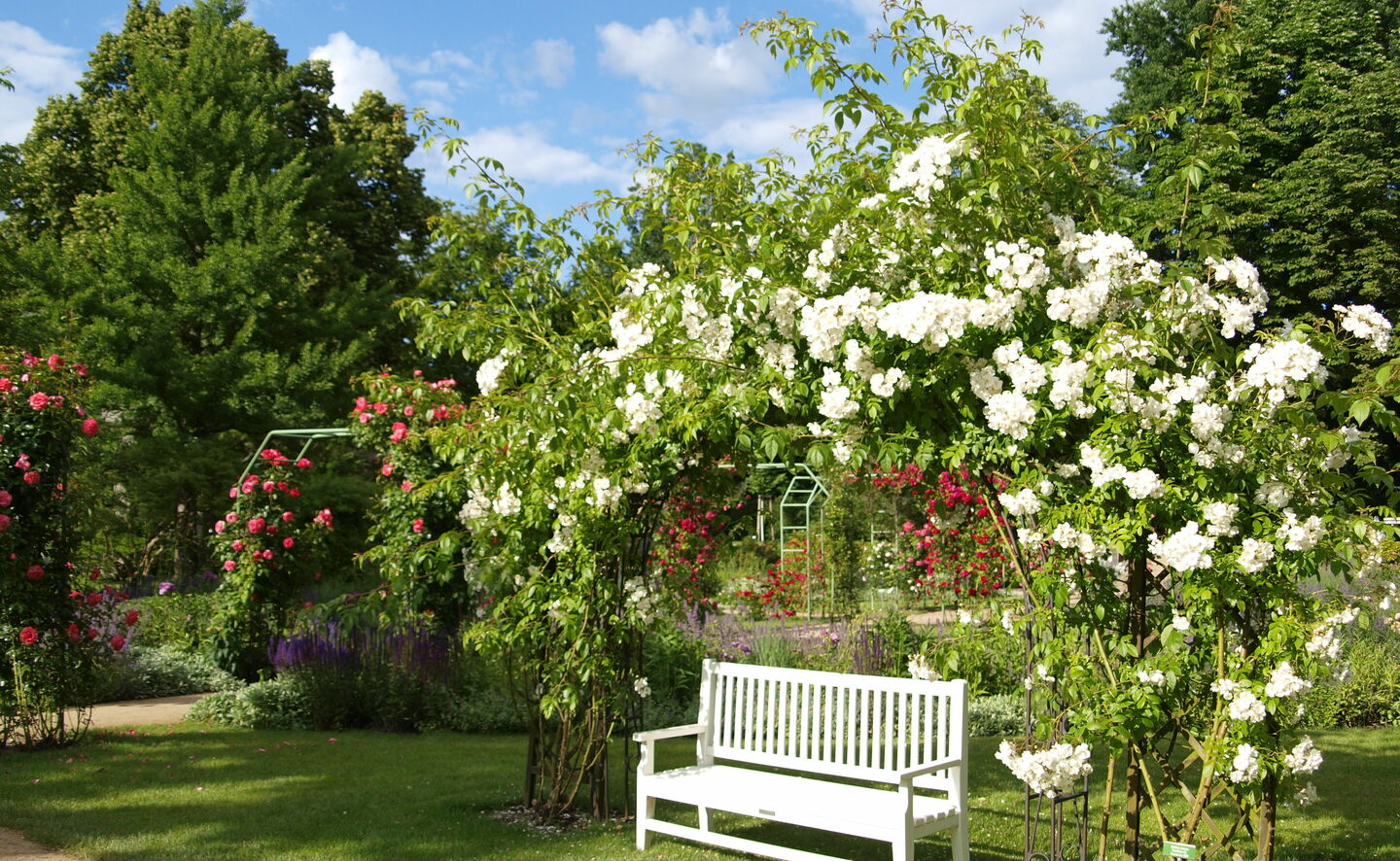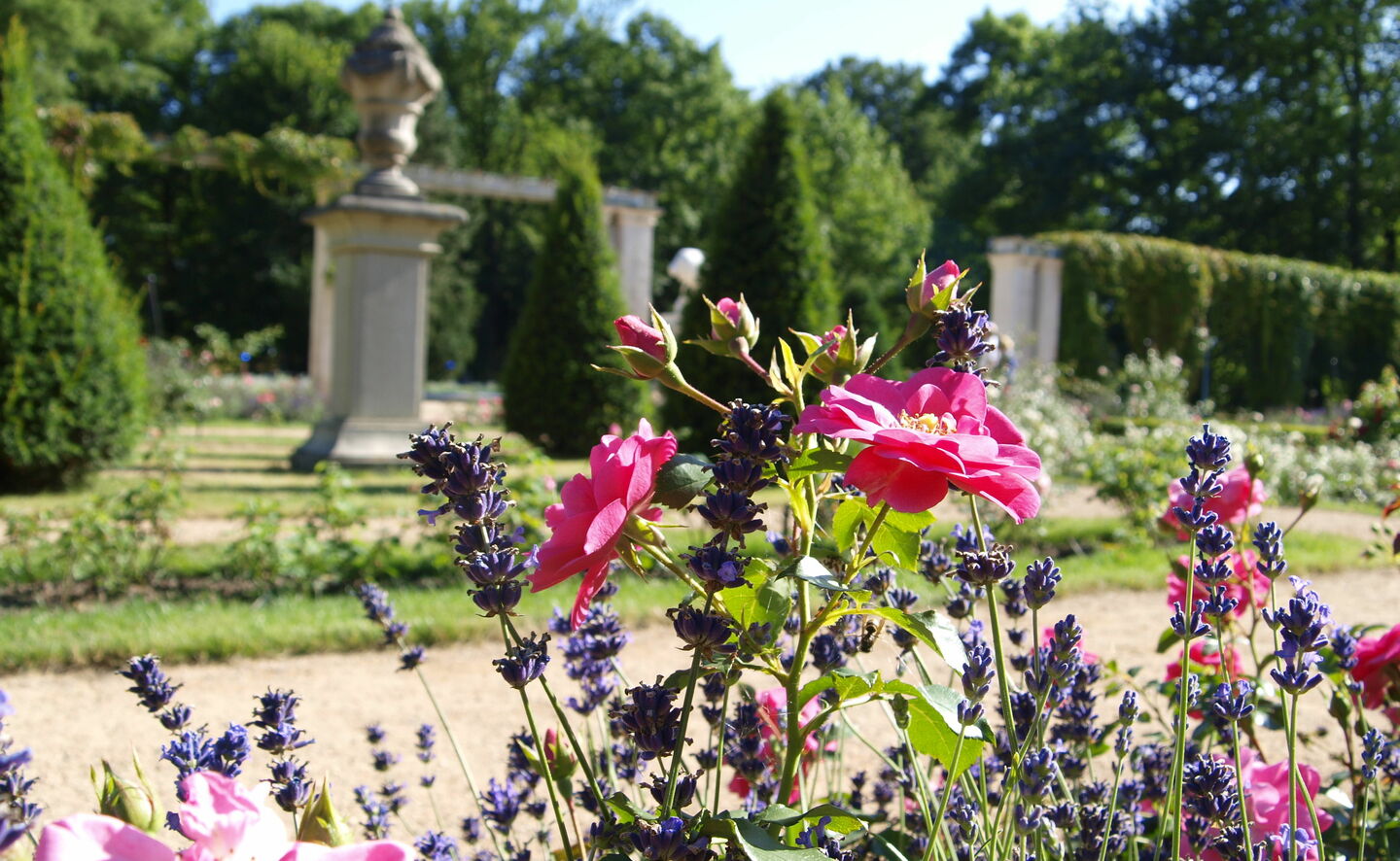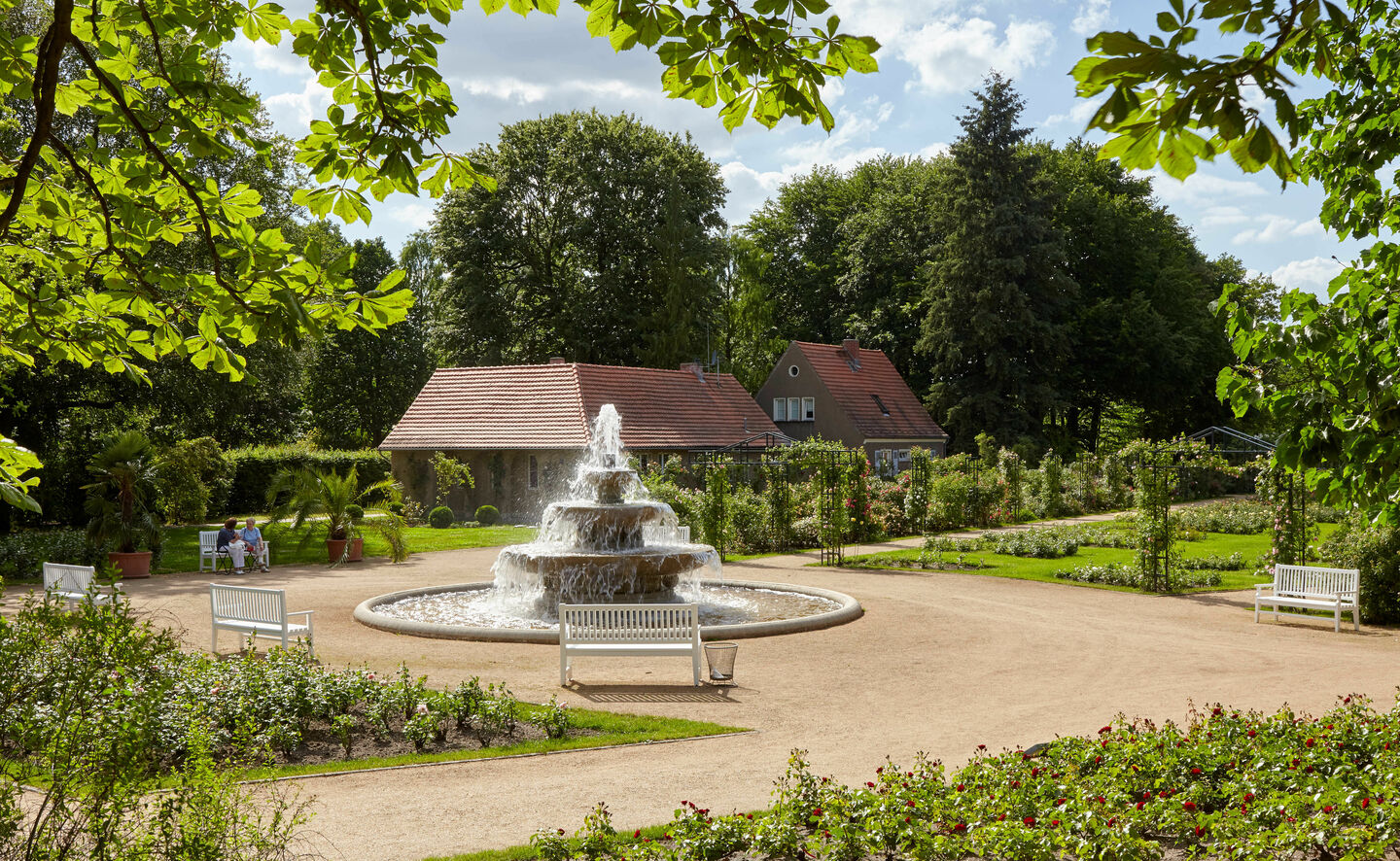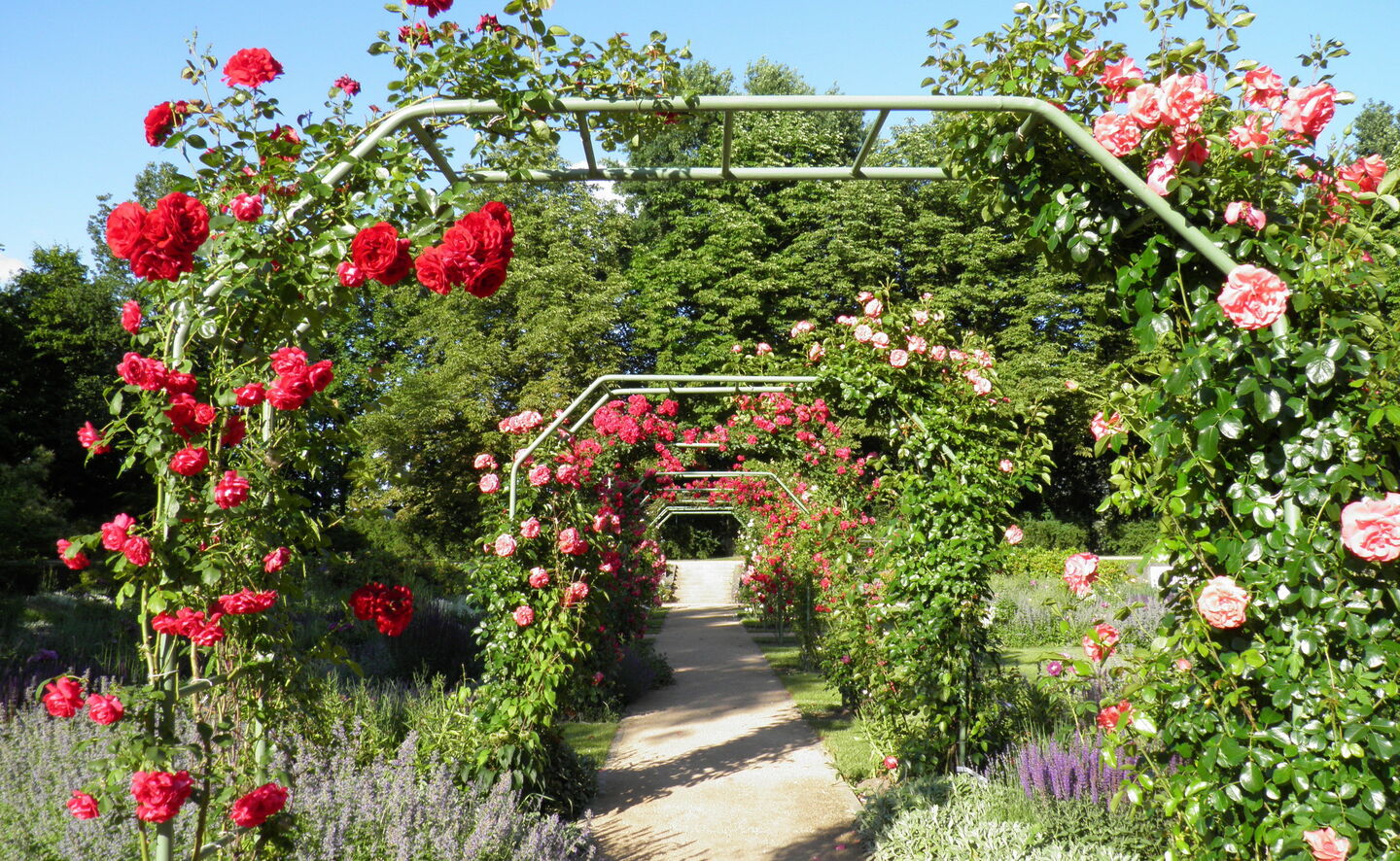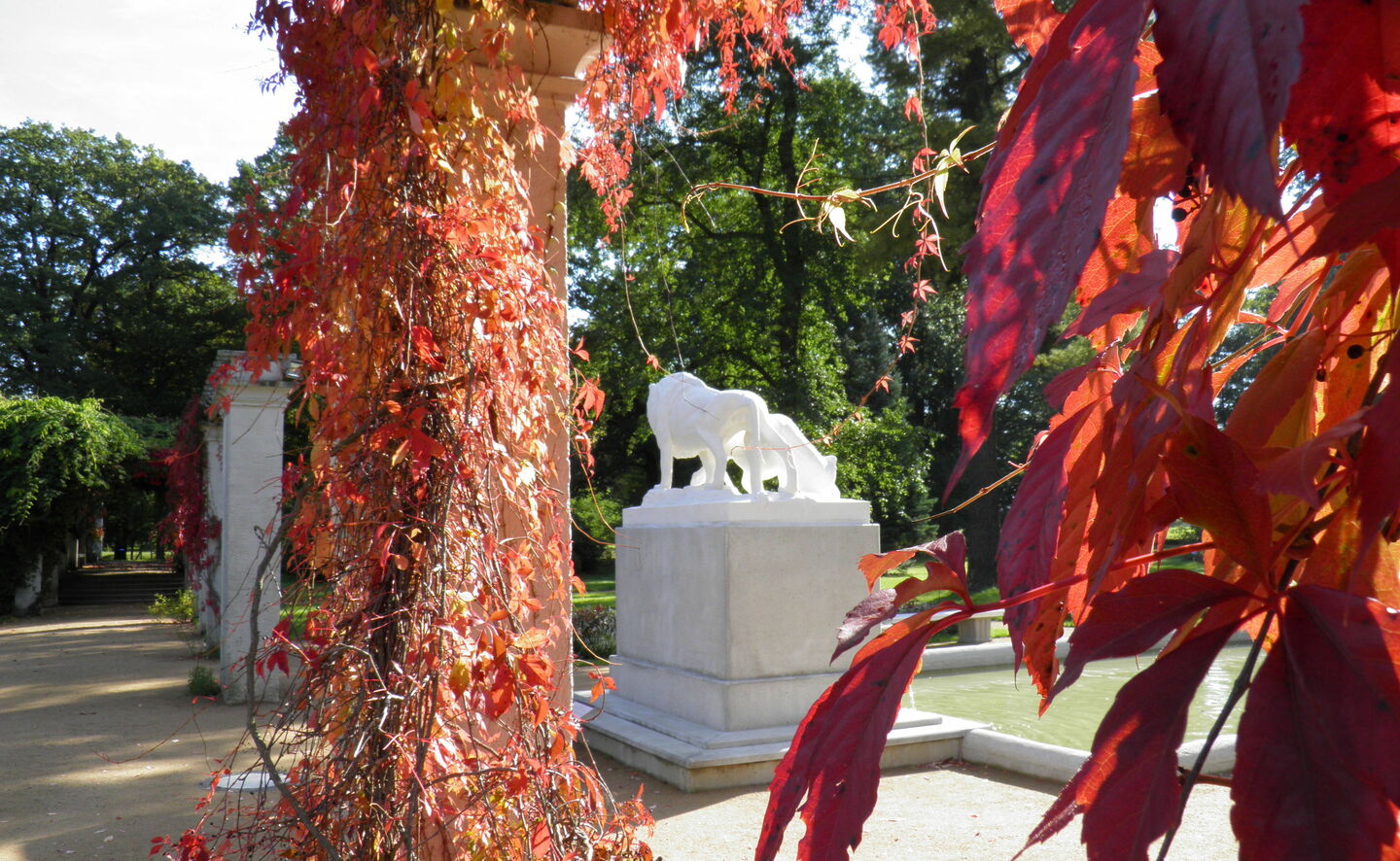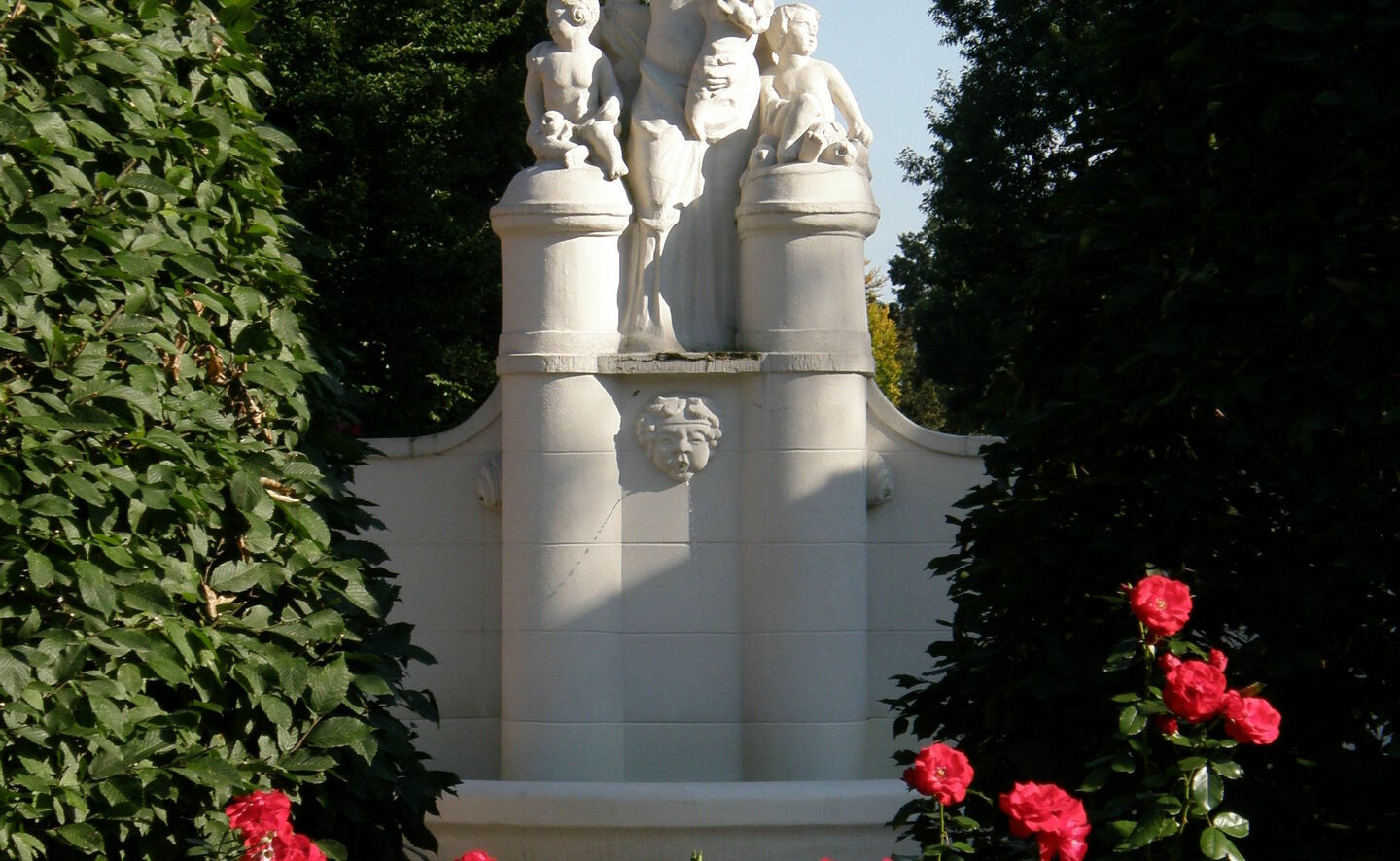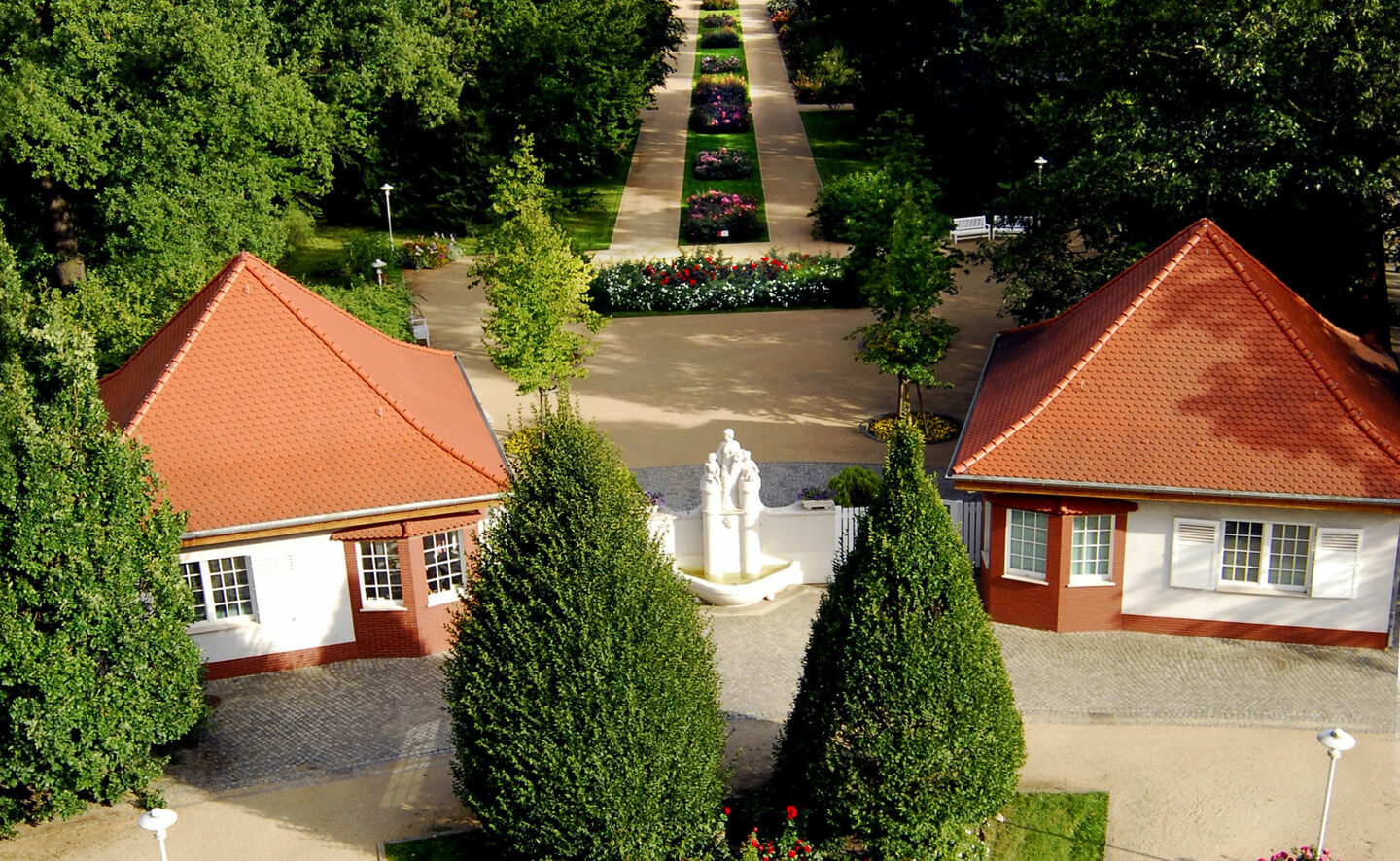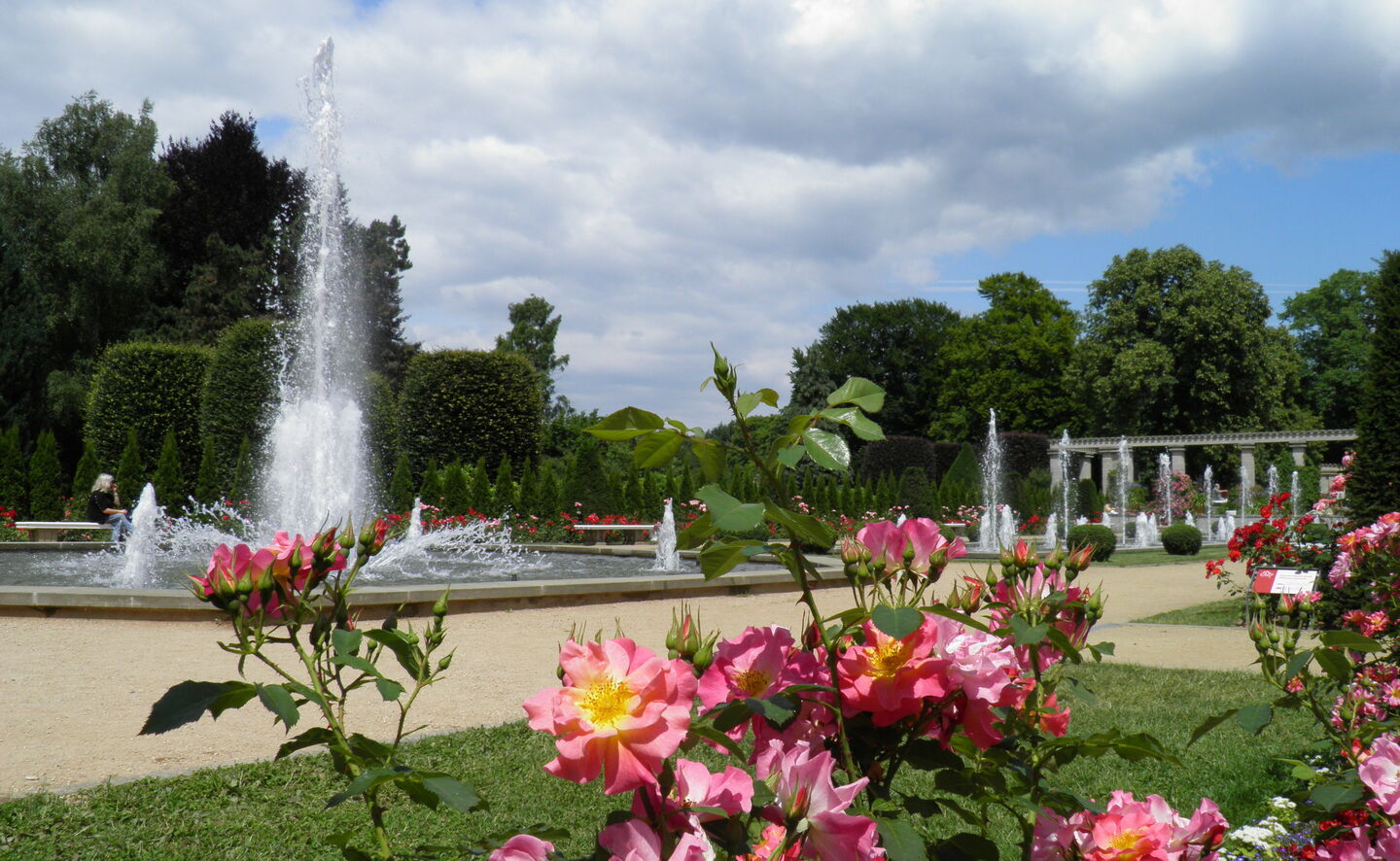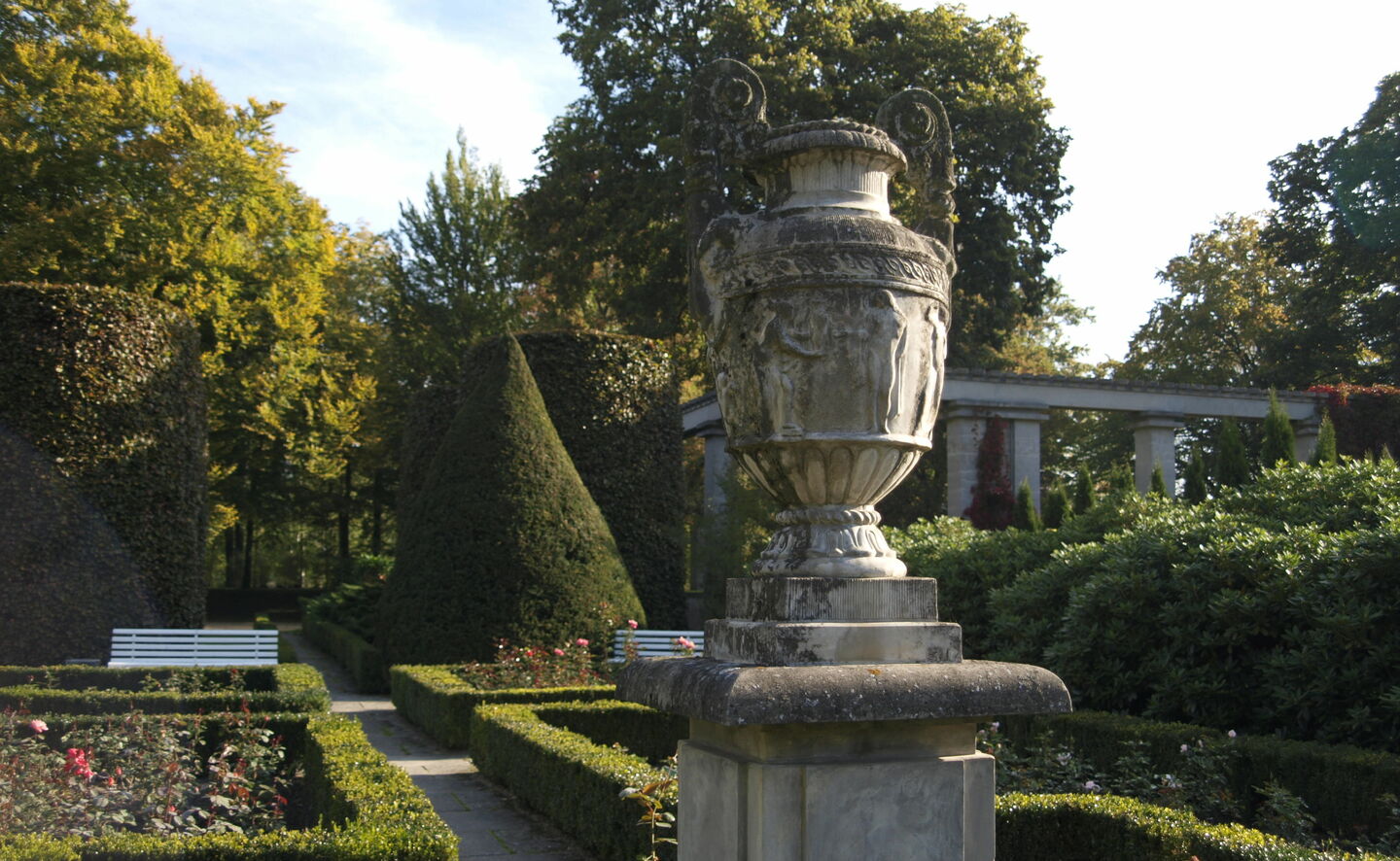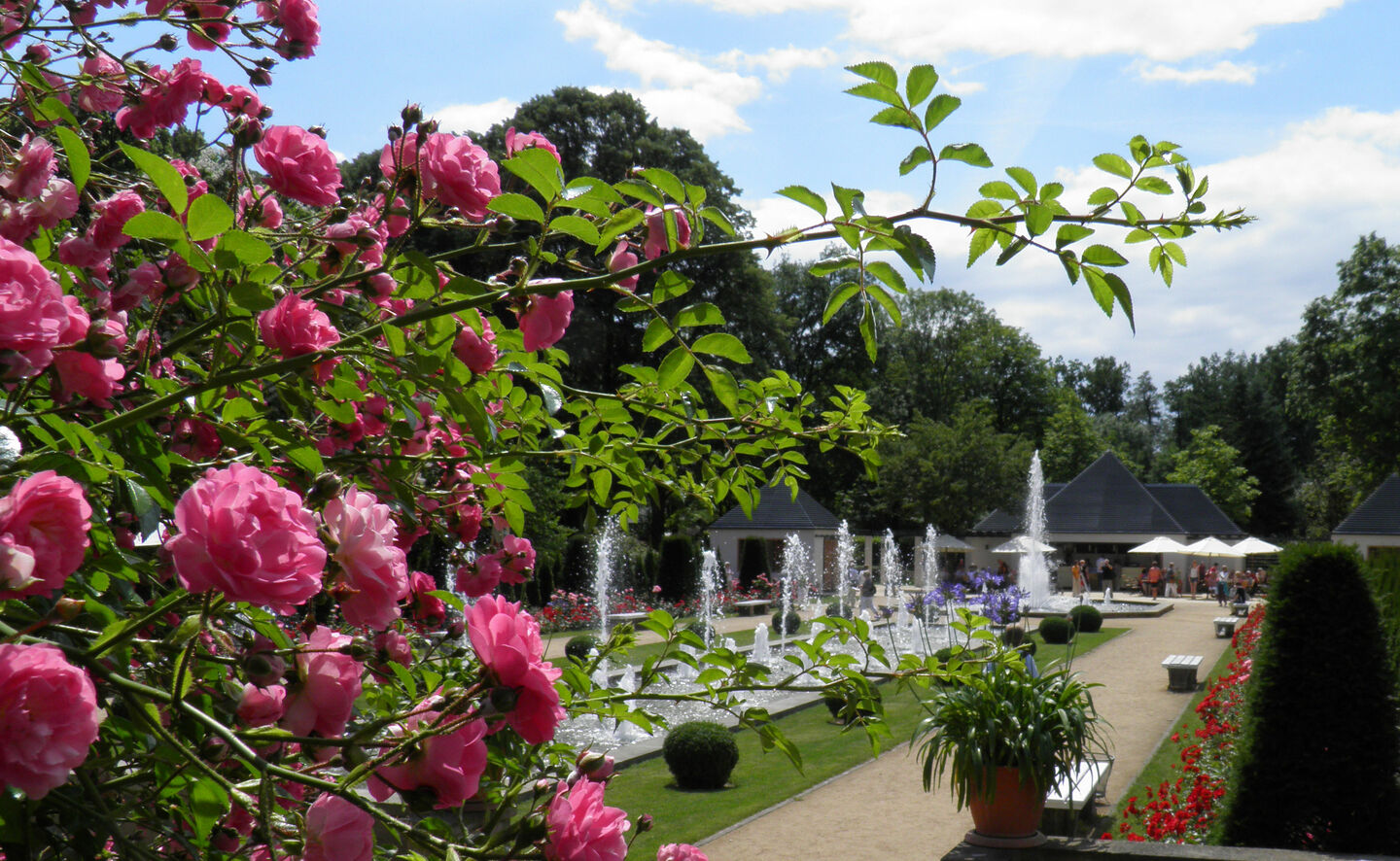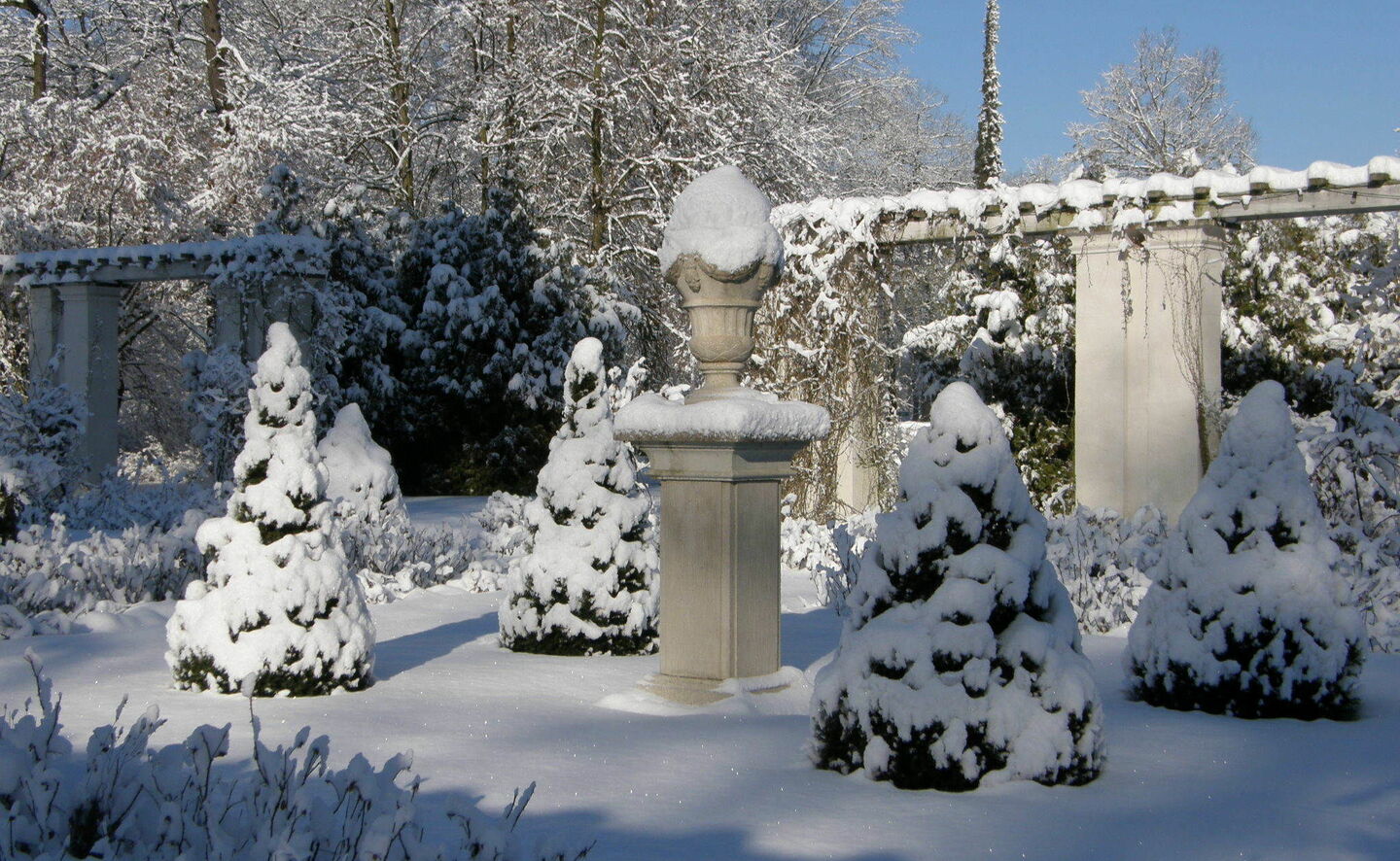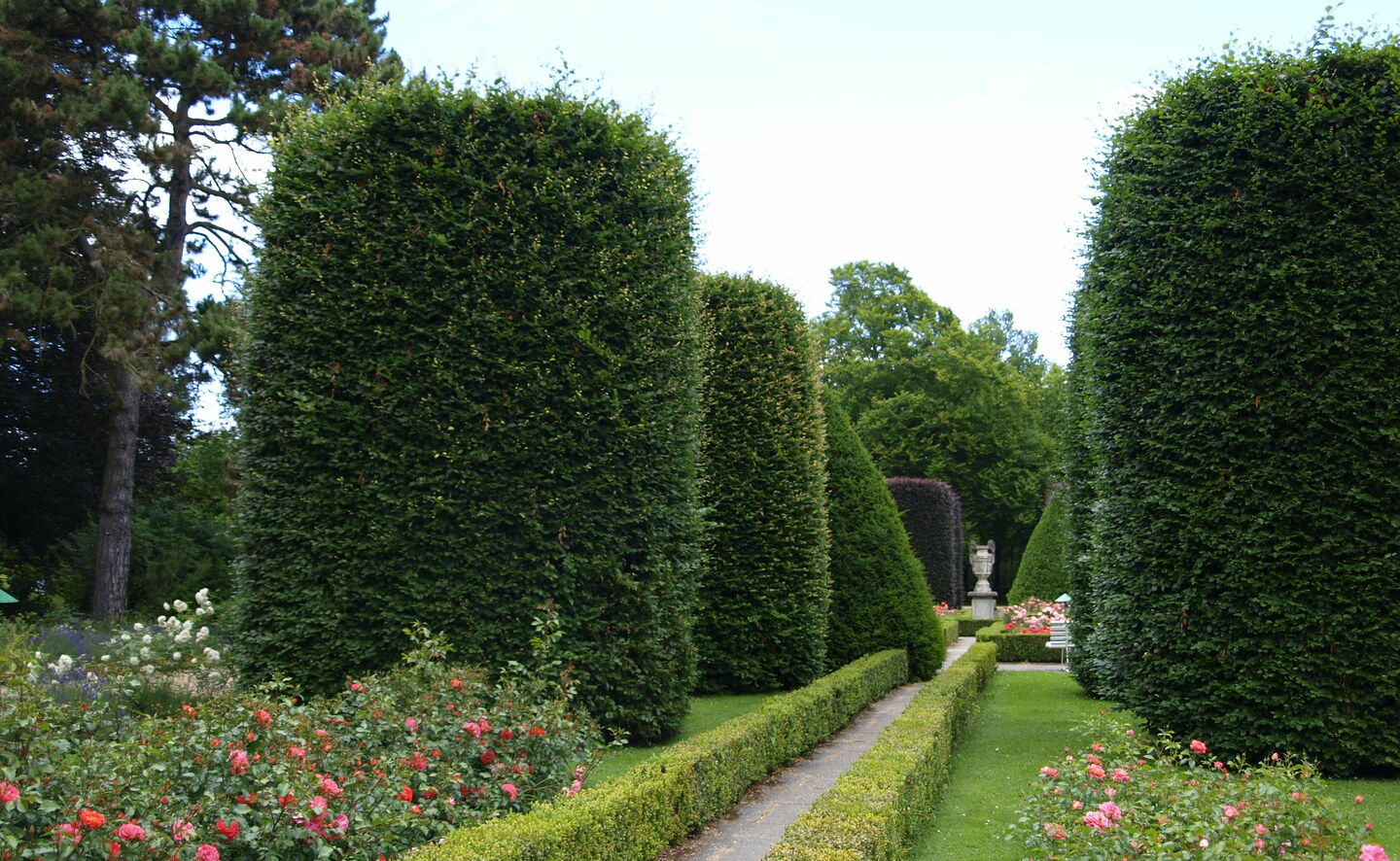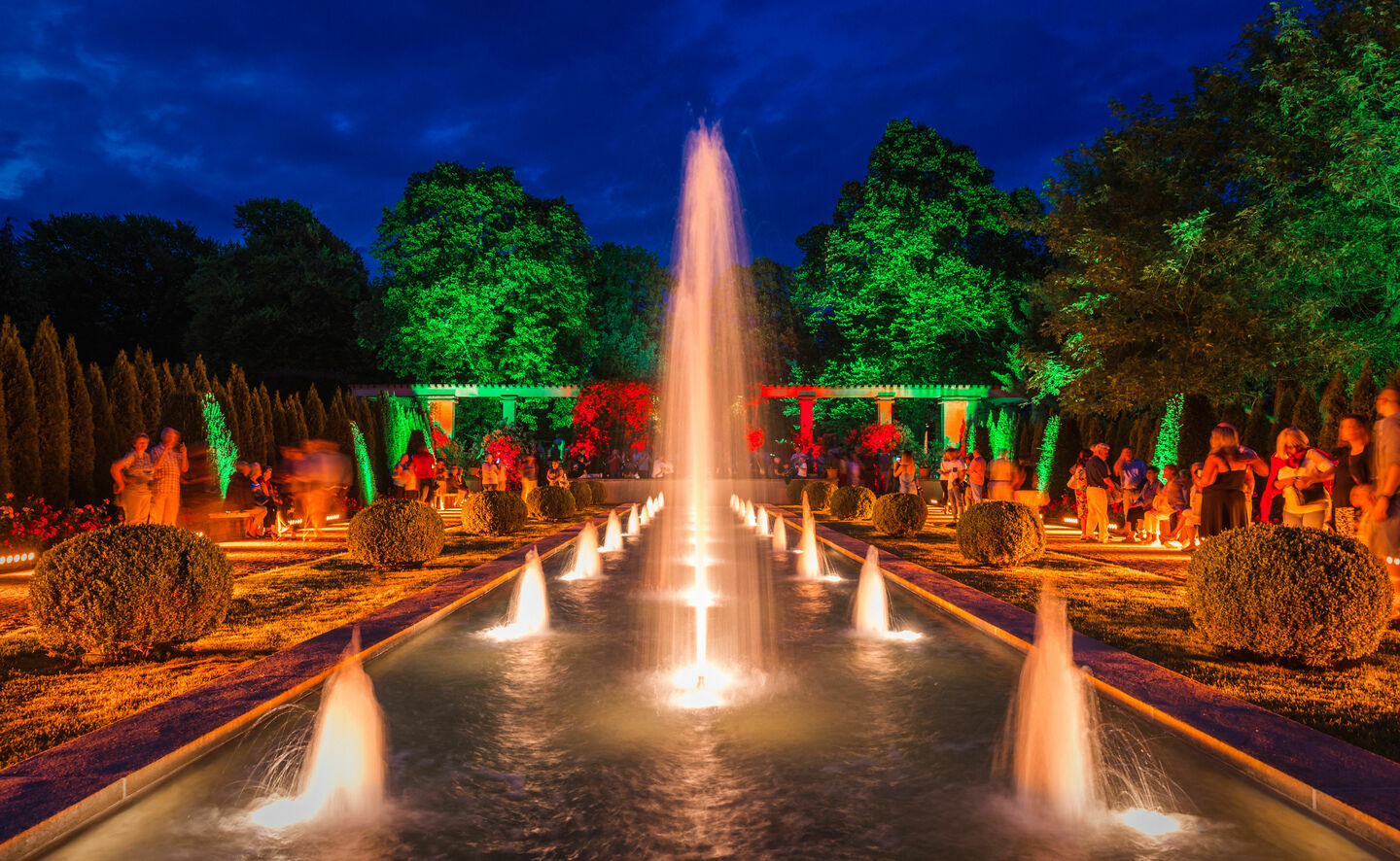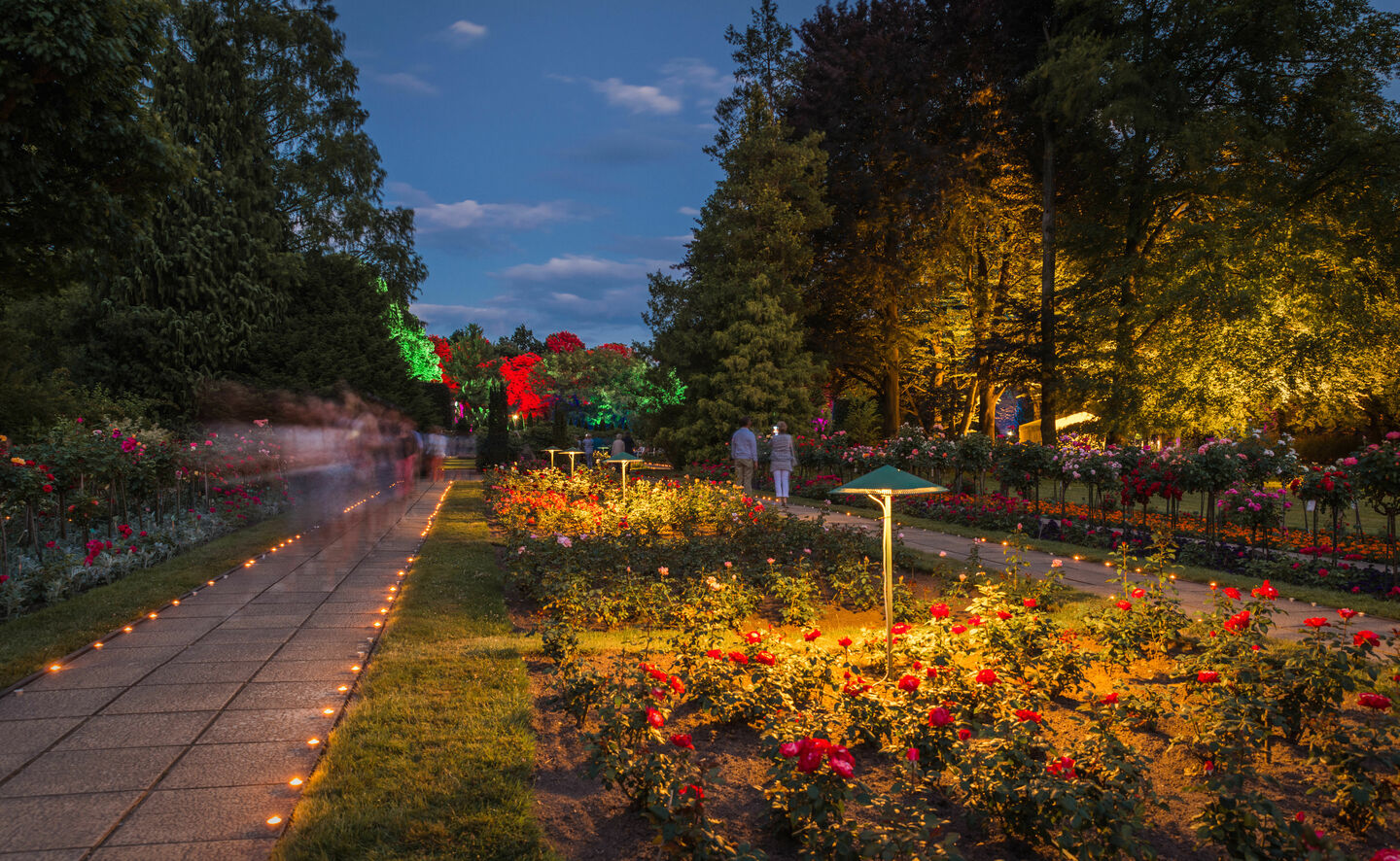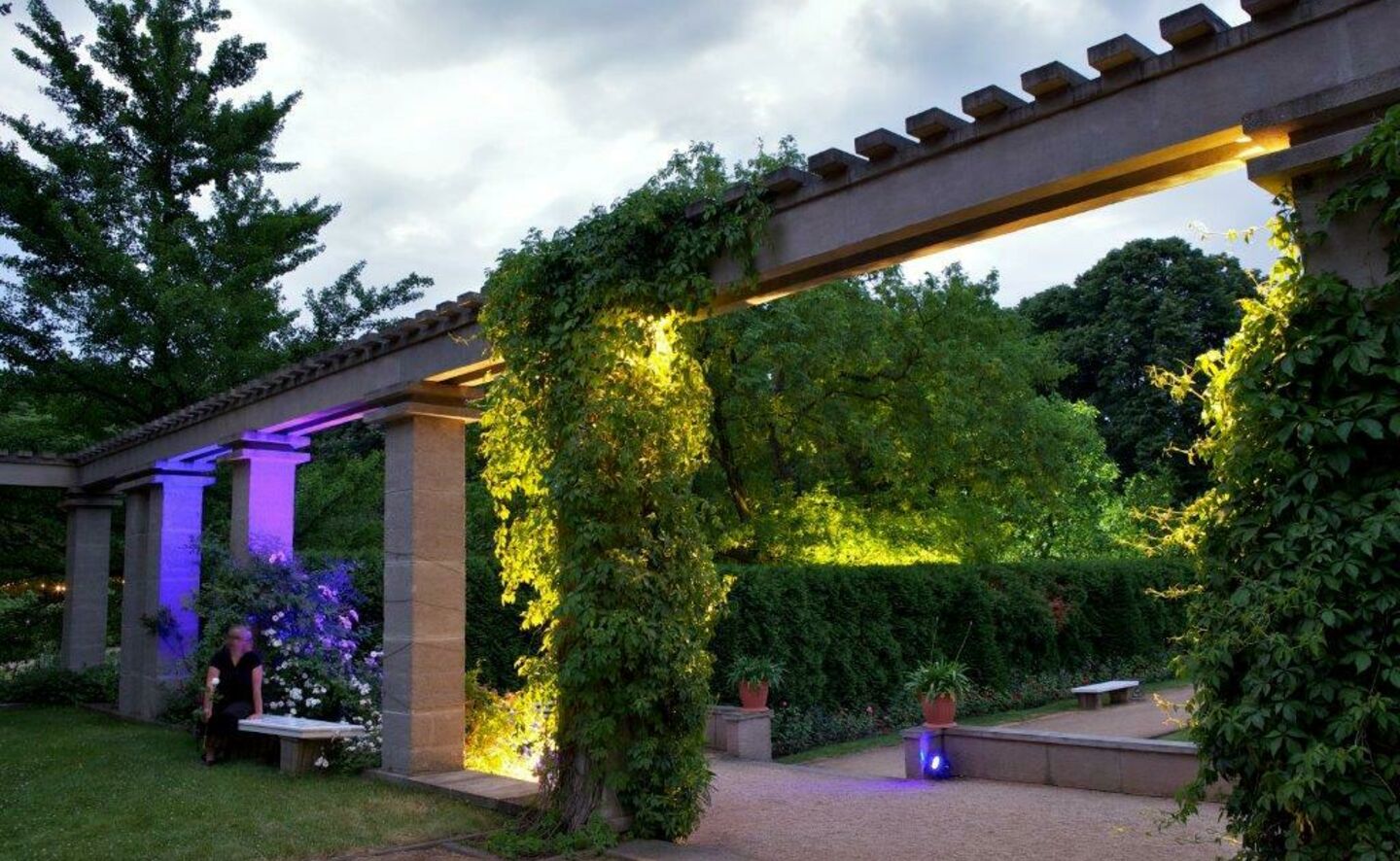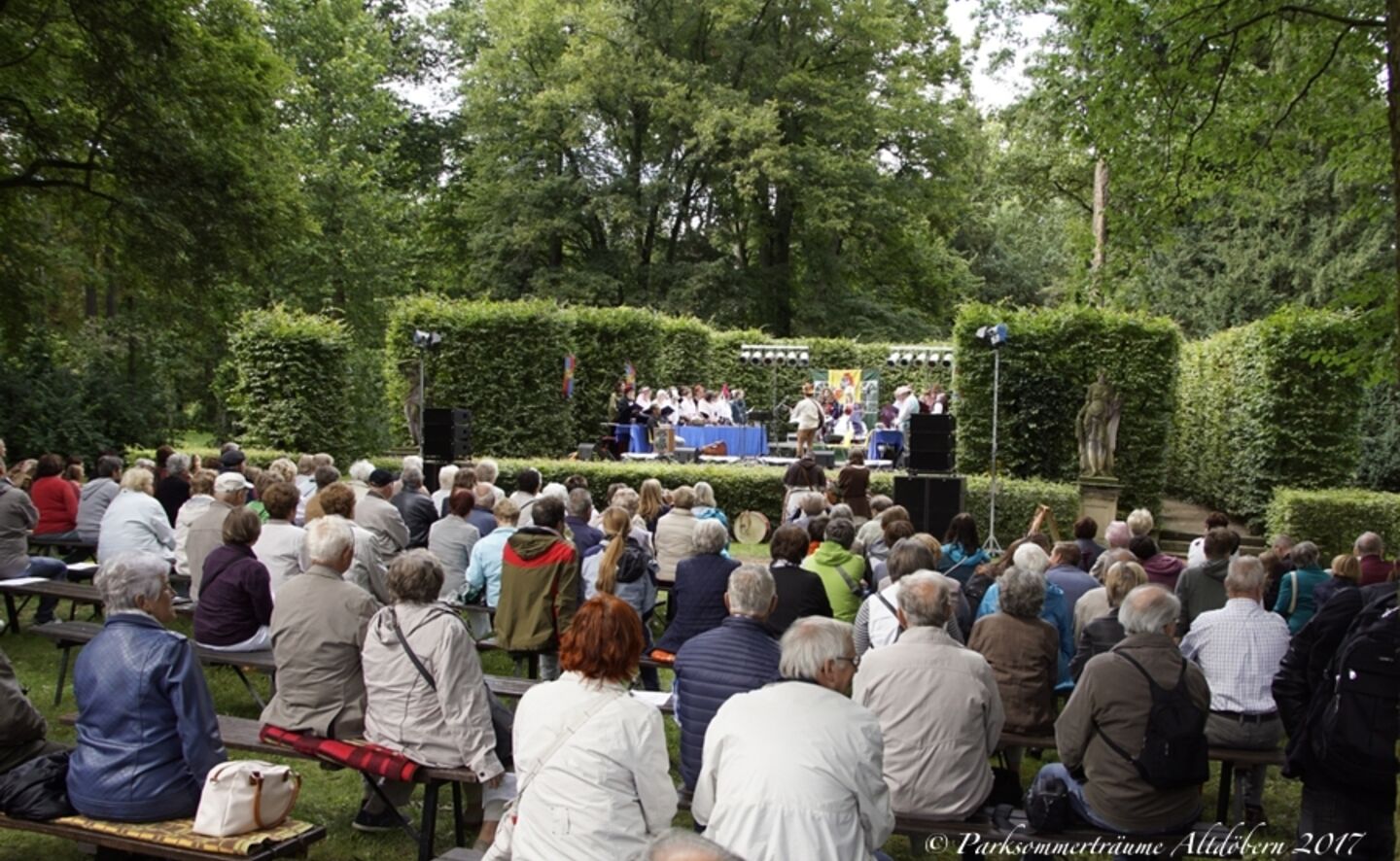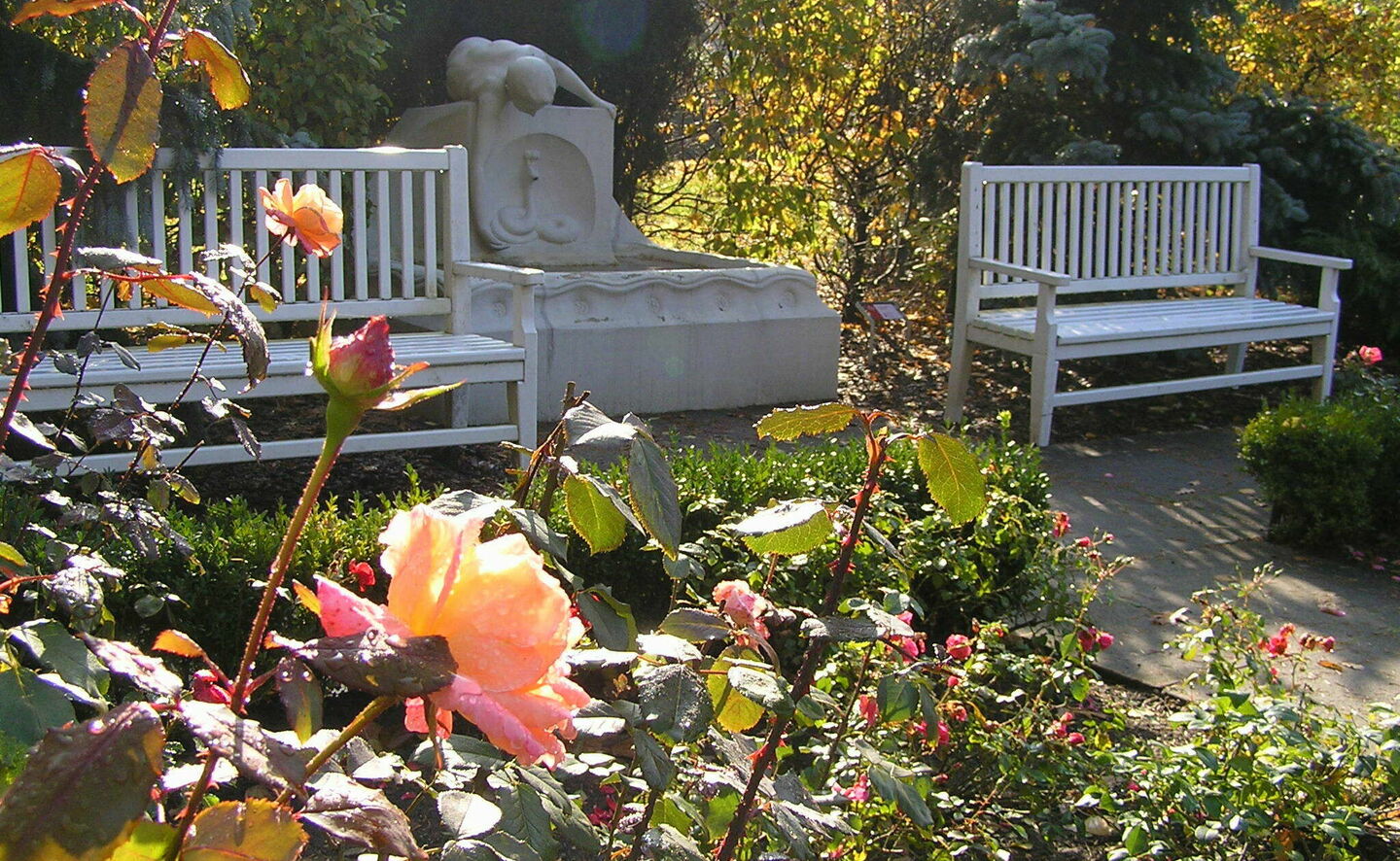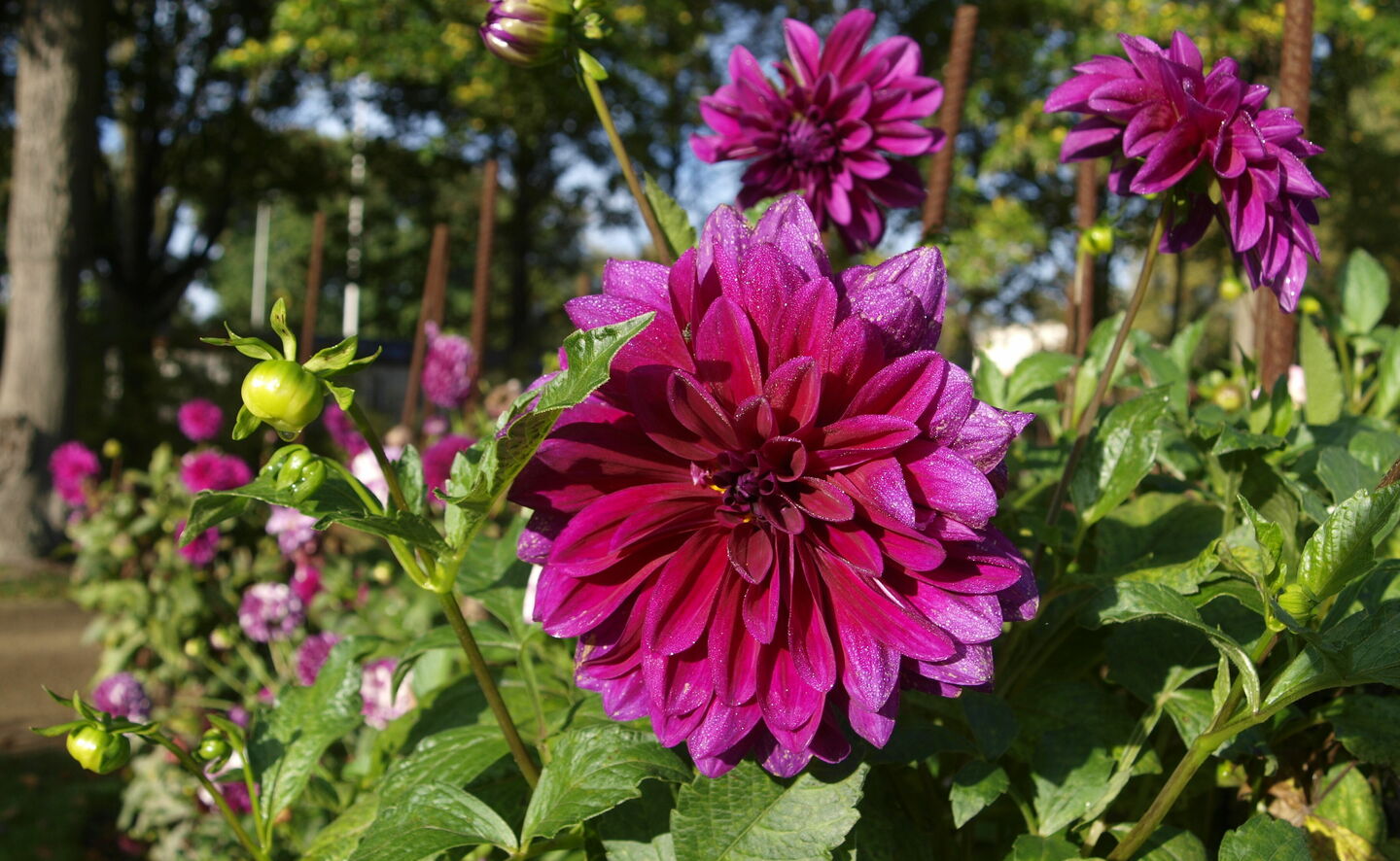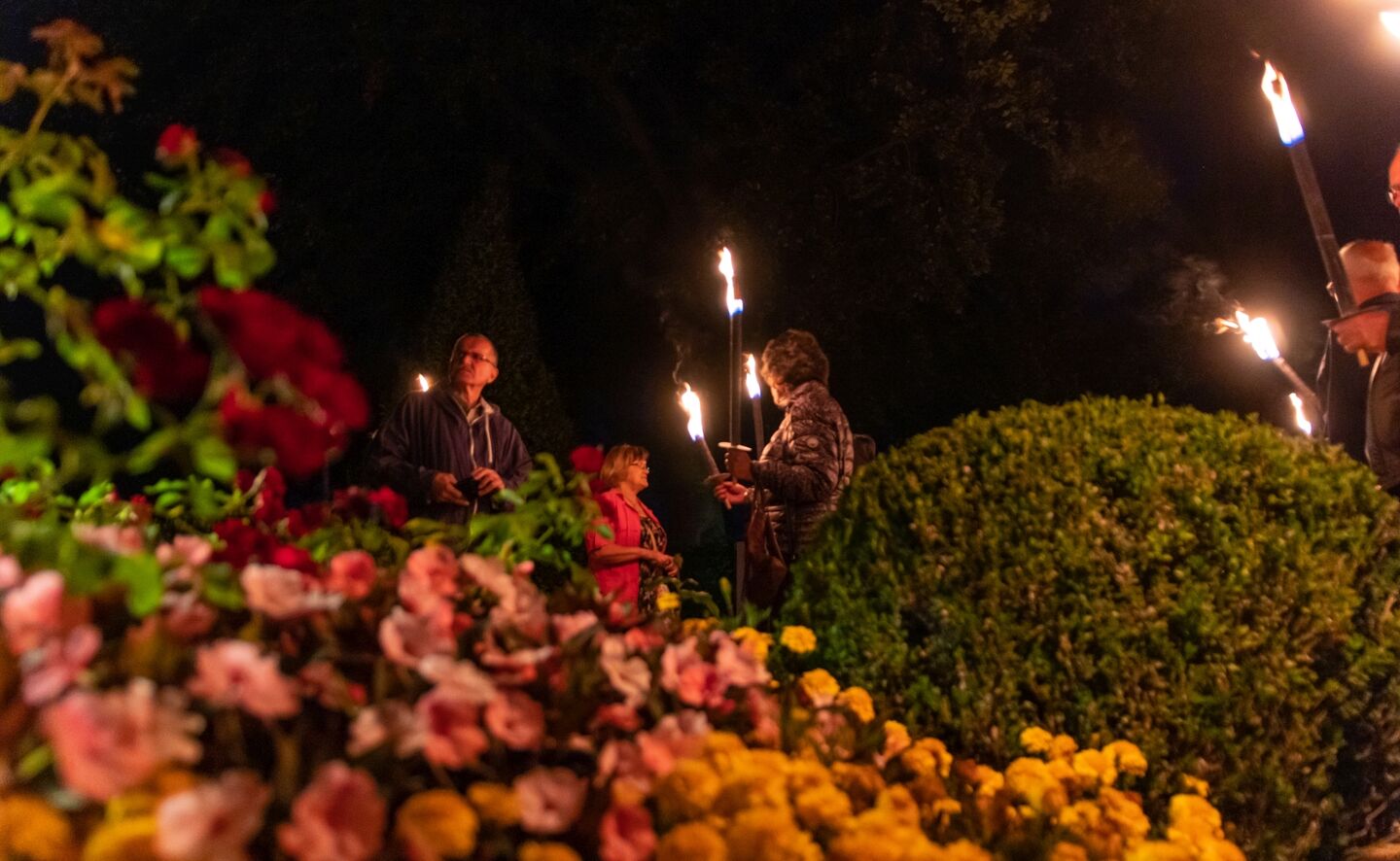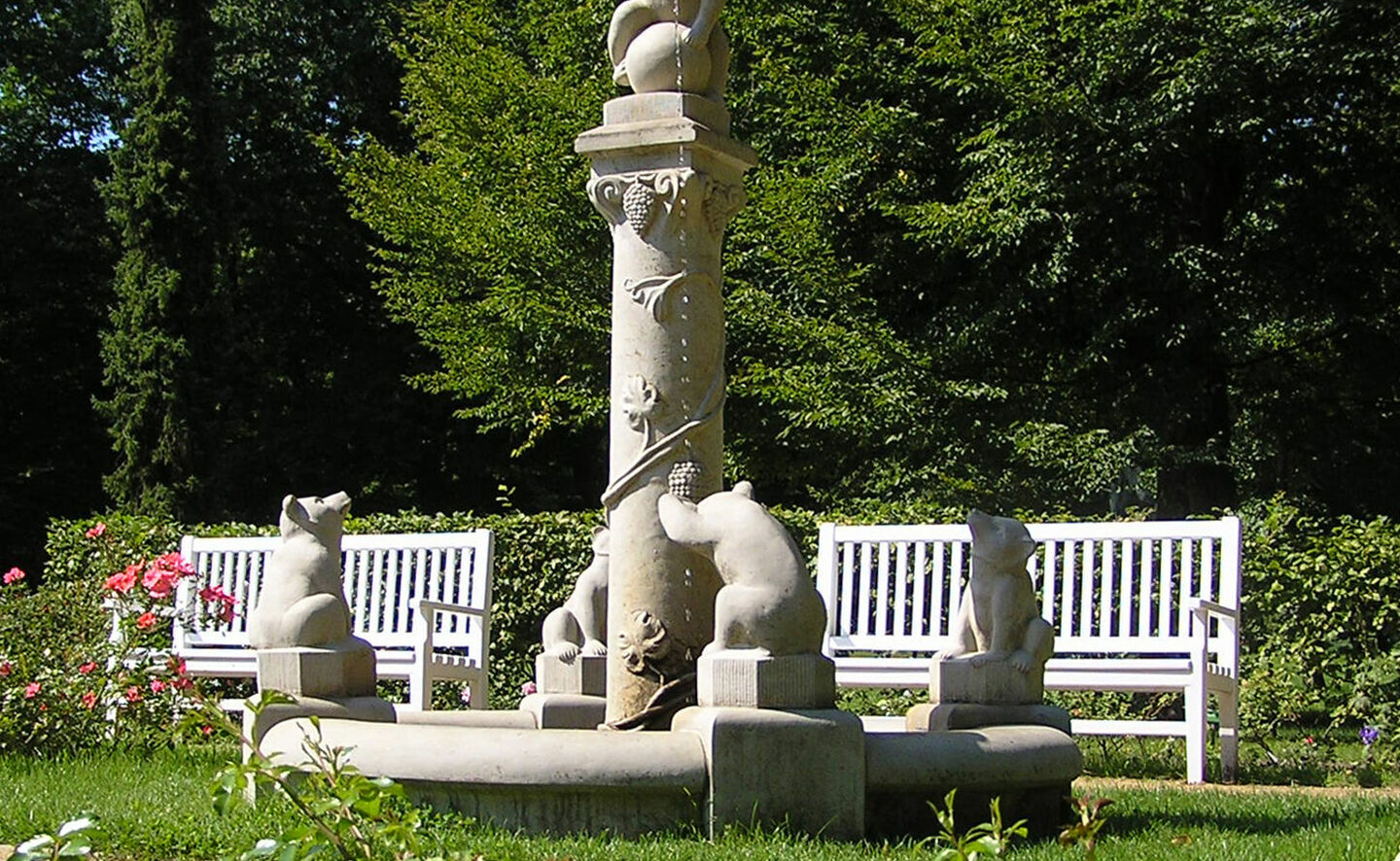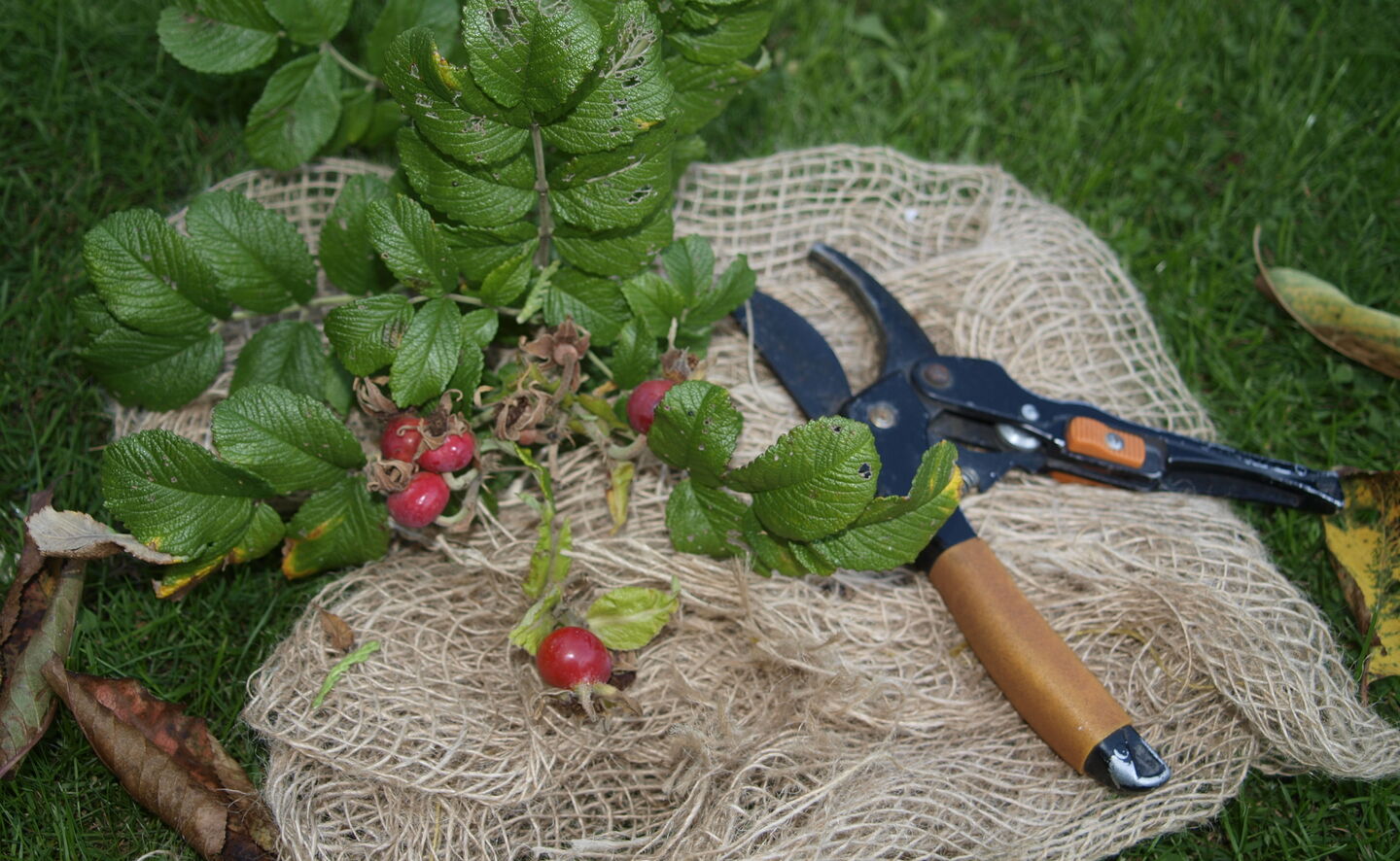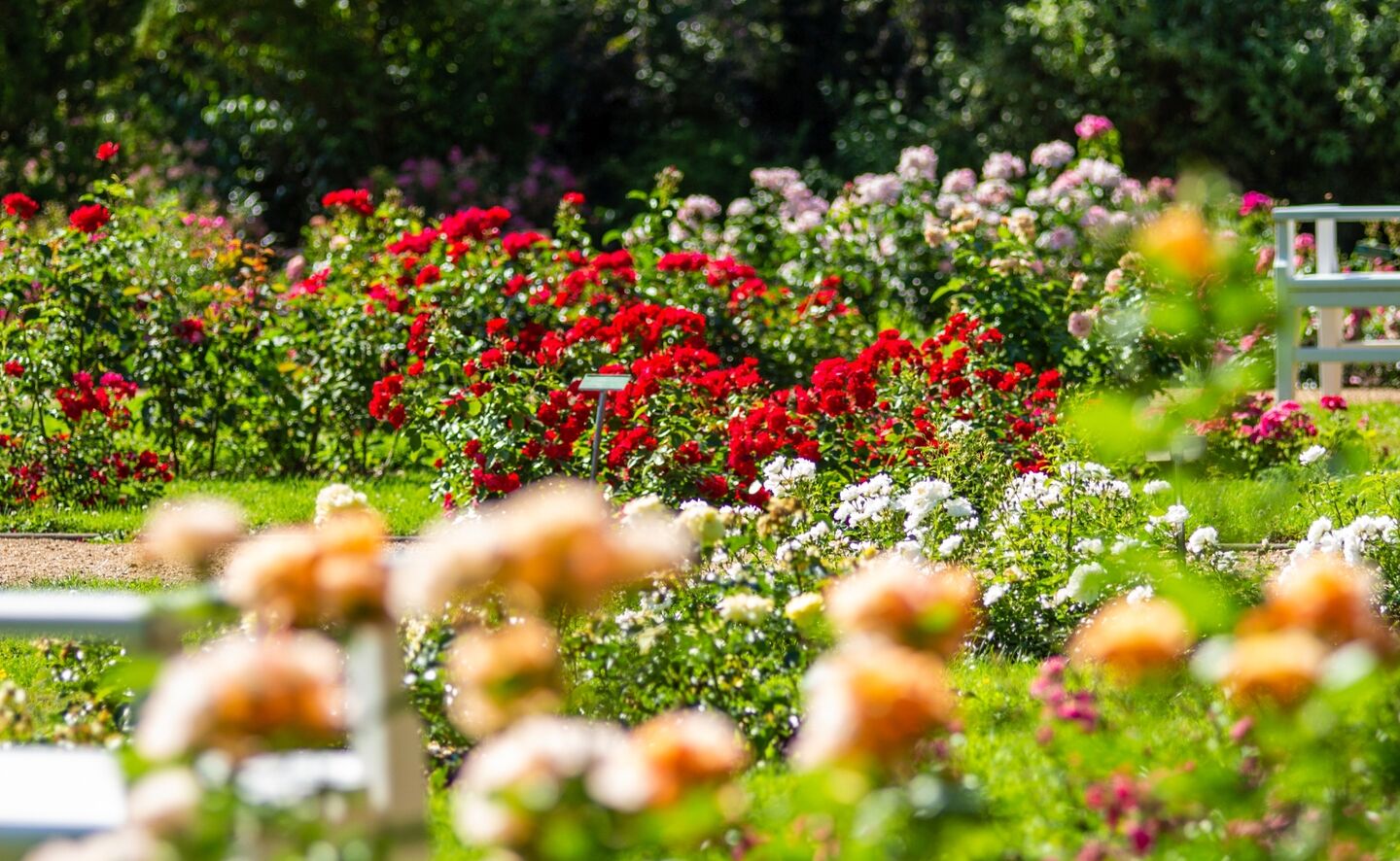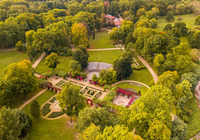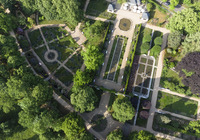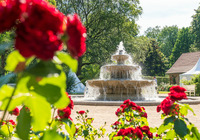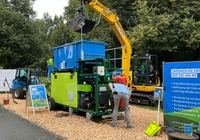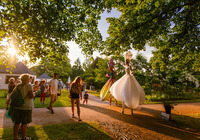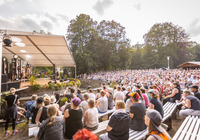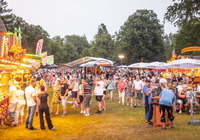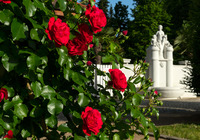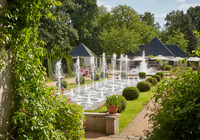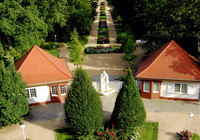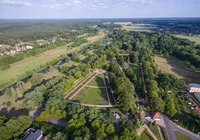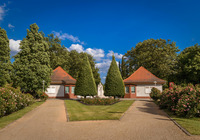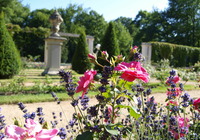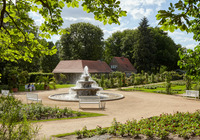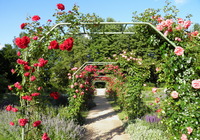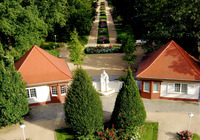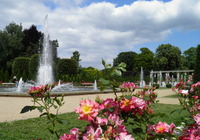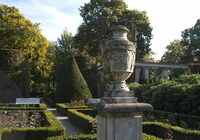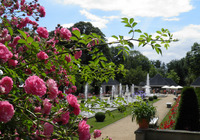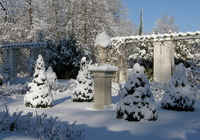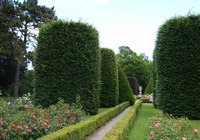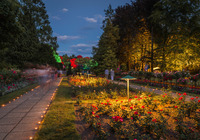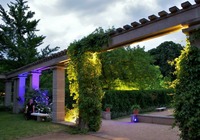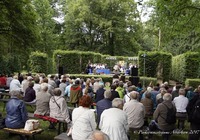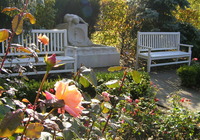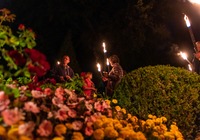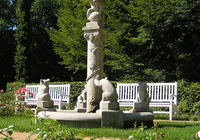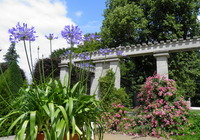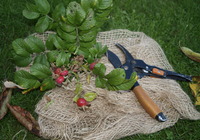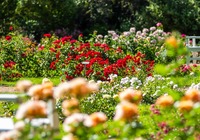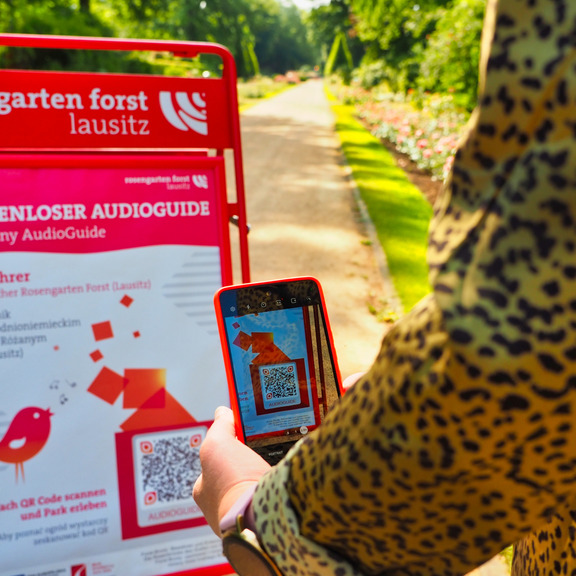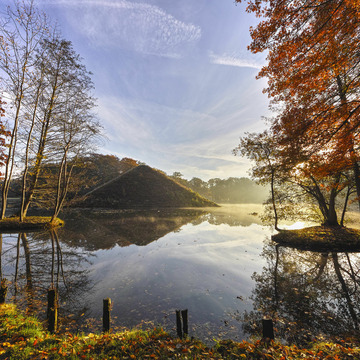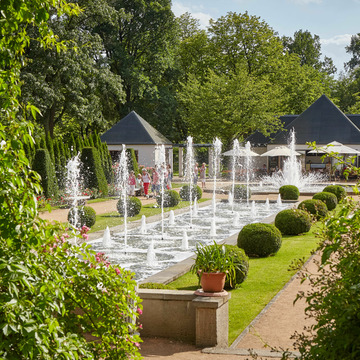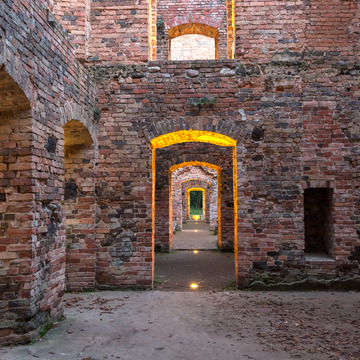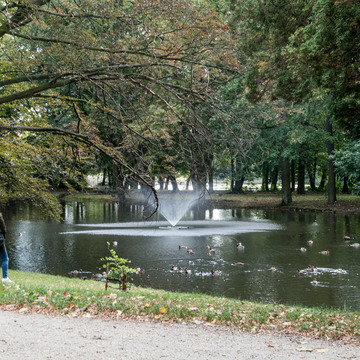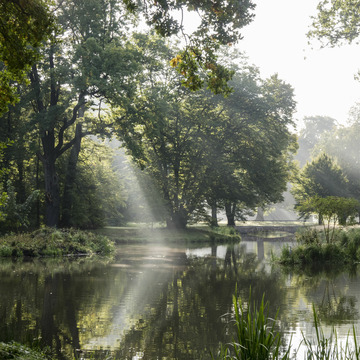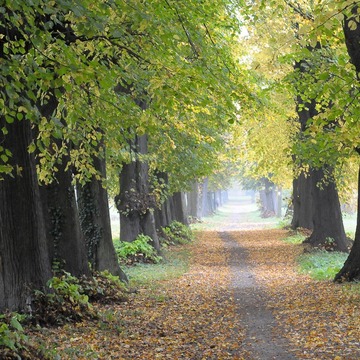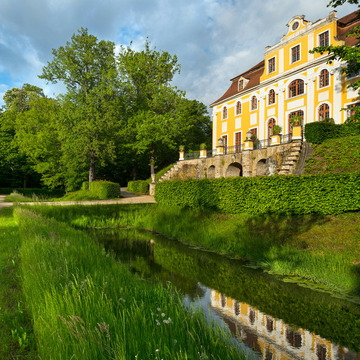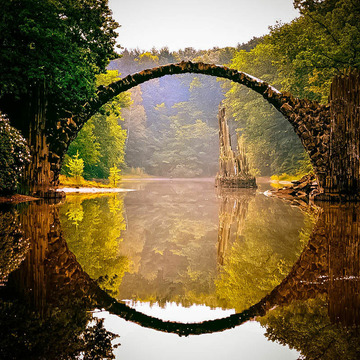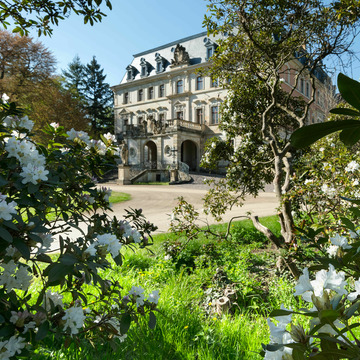In the early twentieth century, the idea of a public park for the local citizens began to take shape on the weir island in the River Neisse. The first major rose and horticulture exhibition took place here in June 1913 to mark the twenty-fifth jubilee of Emperor Wilhelm II.
This exhibition can be considered the birth hour of the German rose shows and laid the foundations for an outstanding park landscape that has been a tradition for more than 100 years now.
Thus, the story of the "East German Rose Garden" began ...
To mark its centenary in 2013, the garden served as the stunning backdrop for the annual German rose show and was able to attract more than 180,000 visitors. The historical park is a listed property and one of the most beautiful in Germany.
The 17-hectare East German Rose Garden in Forst (Lausitz) enchants with its unique combination of garden art, landscape architecture and botanical diversity. Today, rose enthusiasts are able to admire tens of thousands of roses from almost 1,000 varieties here – including countless botanical rarities such as green and black rose varieties and the barbed wire rose.
Although roses are of course the highlight during the main season, a visit is actually worthwhile at any time of the year. Spring blooms, rhododendron groves, summer flowers and perennials, the dahlia garden as well as a variety of conifers and deciduous woody plants will make the hearts of flower and garden lovers beat faster in any season.
Take a seat in the shade of ancient trees or stroll through a sea of fragrance and colour. Pause for refreshments in the café by the water features or in Rosenflair restaurant.
Why not get to know the gardens from a different perspective during a 'Rosengartensonntag' open Sunday or experience the various garden spaces as venues for a varied and diverse cultural programme during the 'Rosengartenfesttagen' rose festival that takes place on the last weekend in June? Illuminations, candles and fireworks transform the magical park setting into a composition of light and hues during the 'Nacht der 1.000 Lichter'. And if a visit to the East German Rose Garden has left you curious, then there's still plenty more to discover in and around the rose town of Forst (Lausitz).
We look forward to welcoming you!
Tourism offers
With the audio guide through the park.
Diese Karte kann nicht von Google Maps geladen werden, da Sie in den Datenschutz- und Cookie-Einstellungen externen Inhalten nicht zugestimmt haben.

